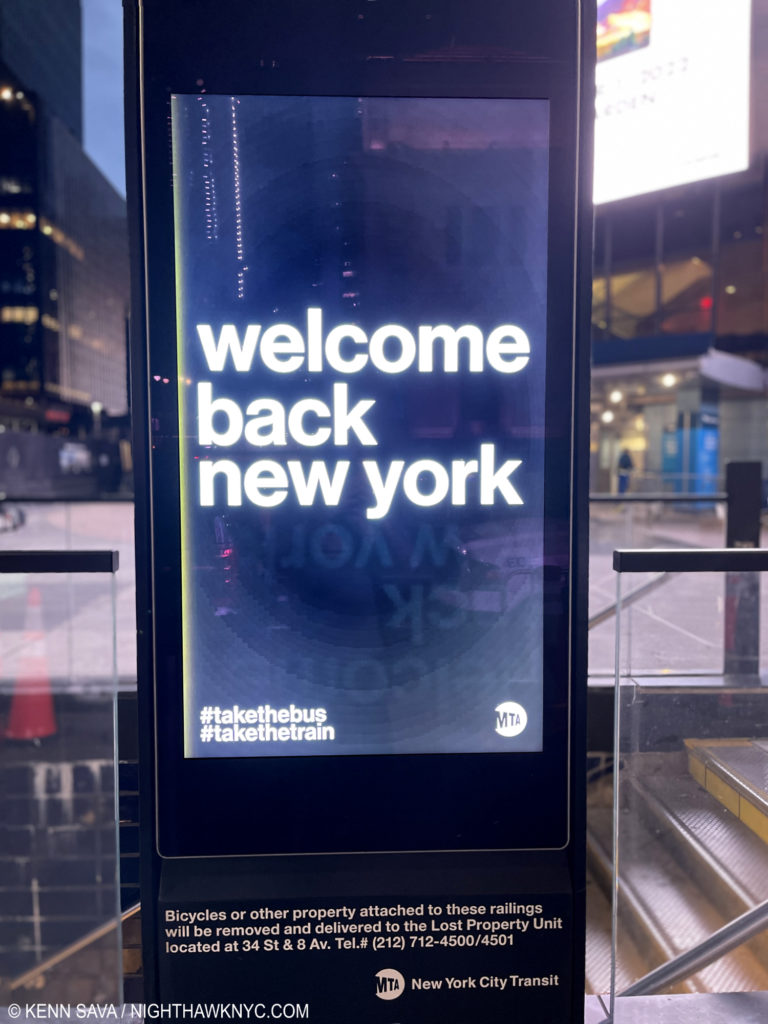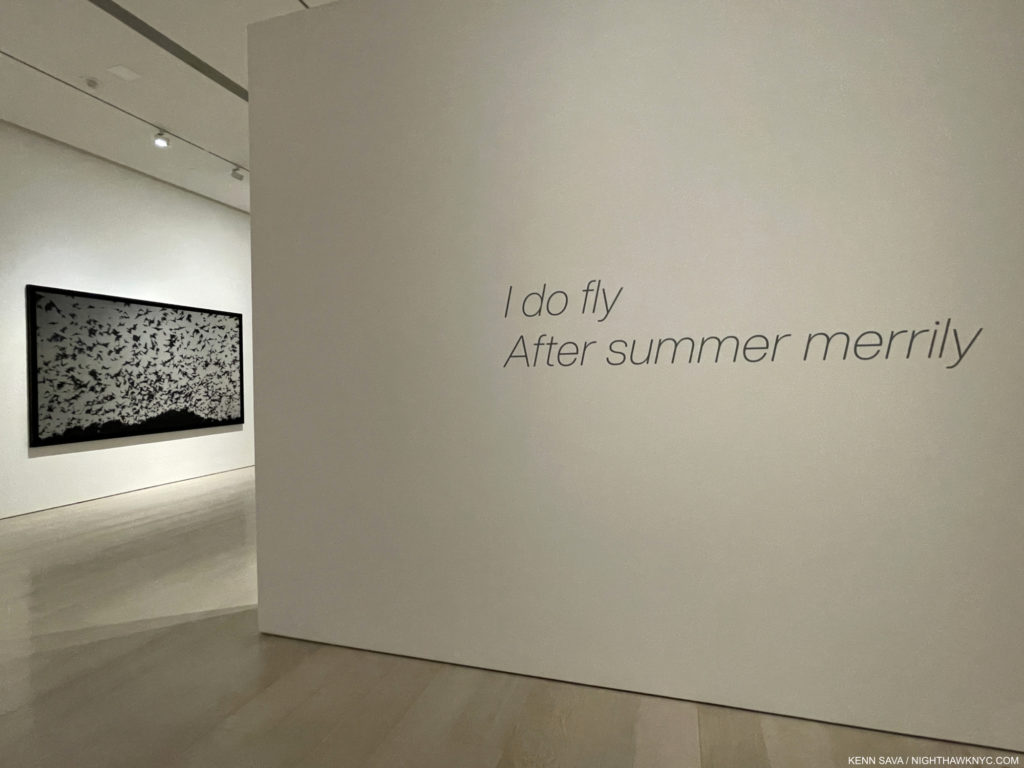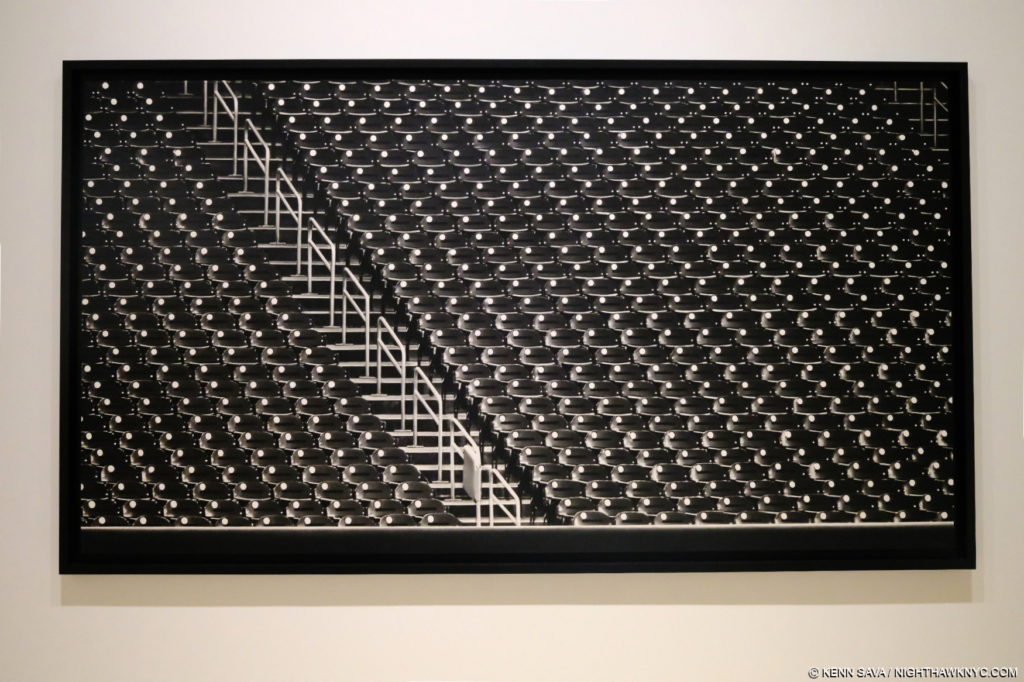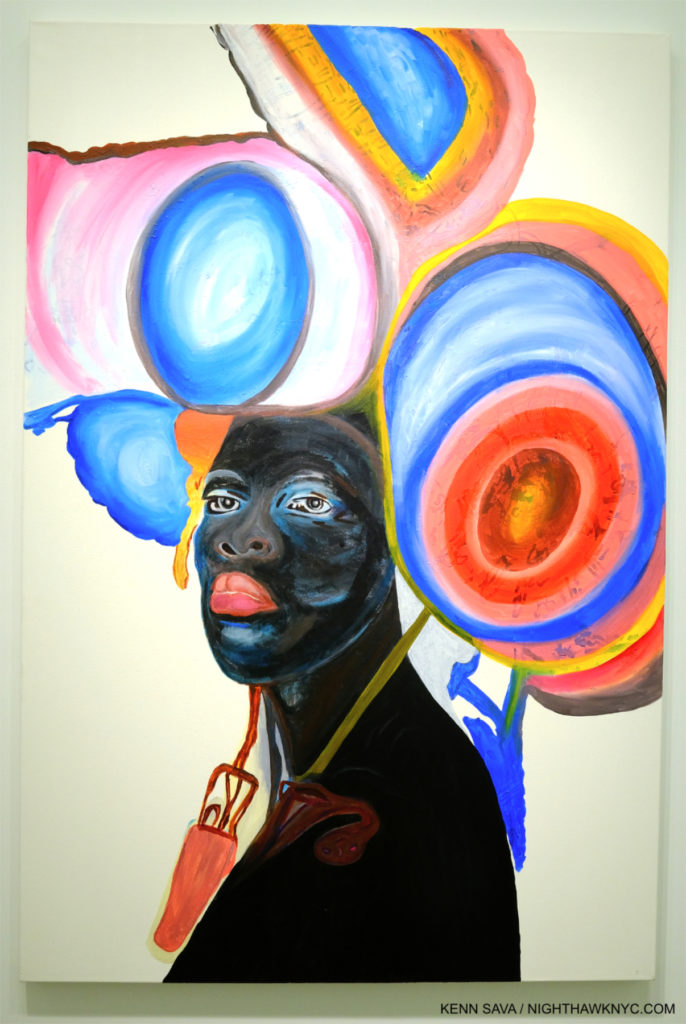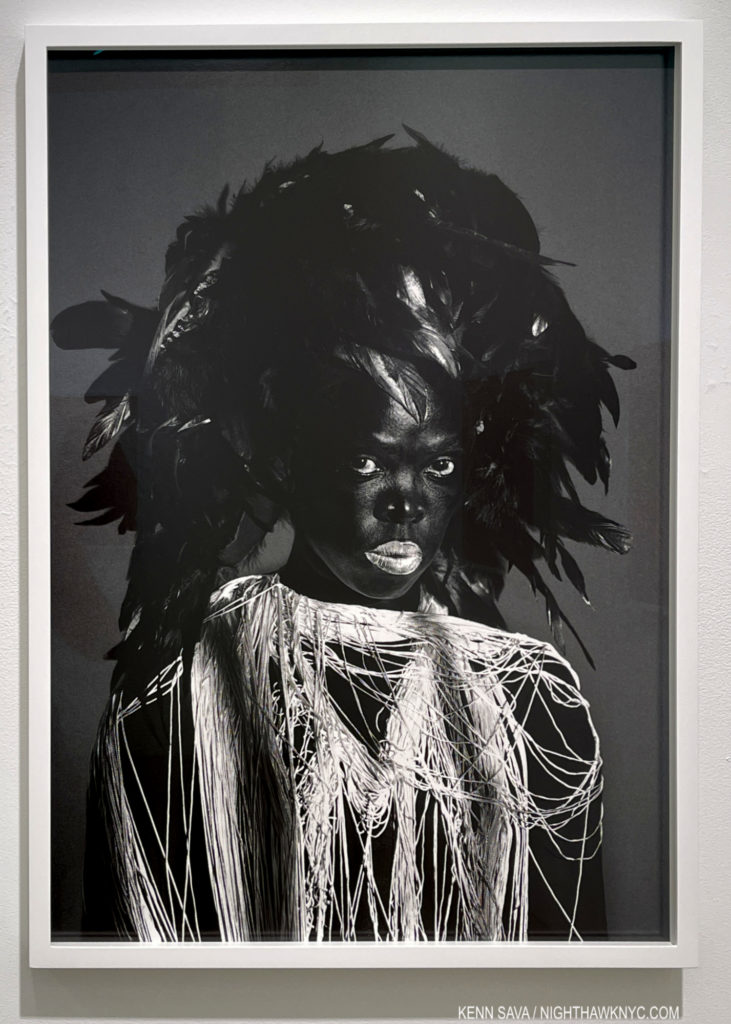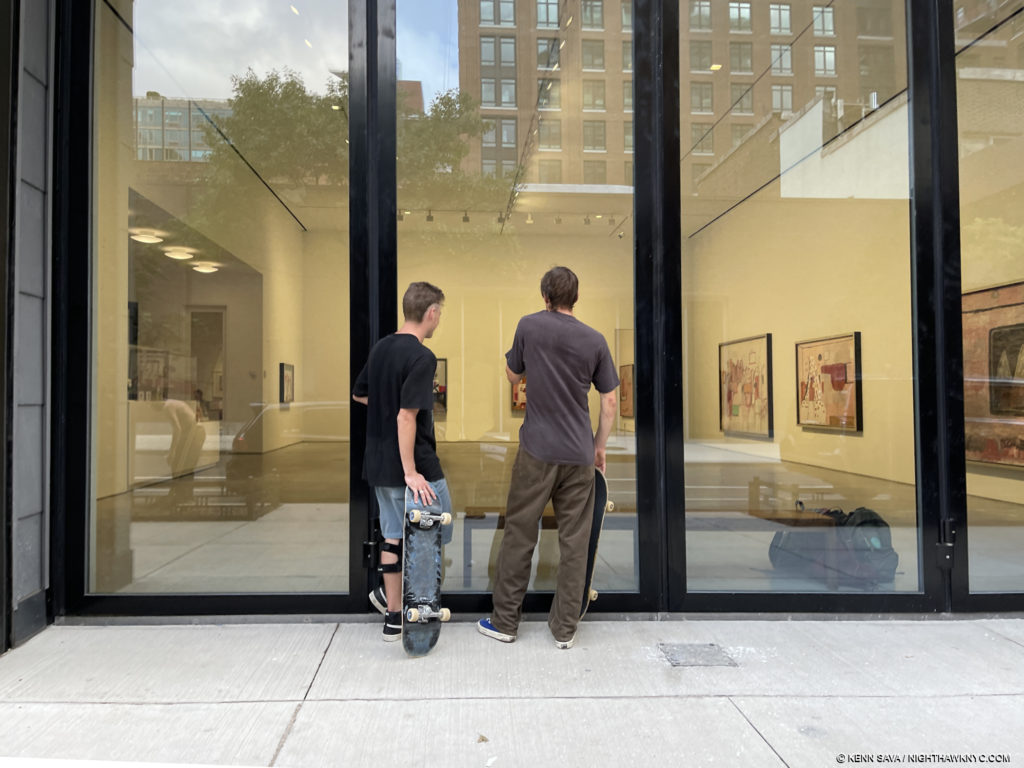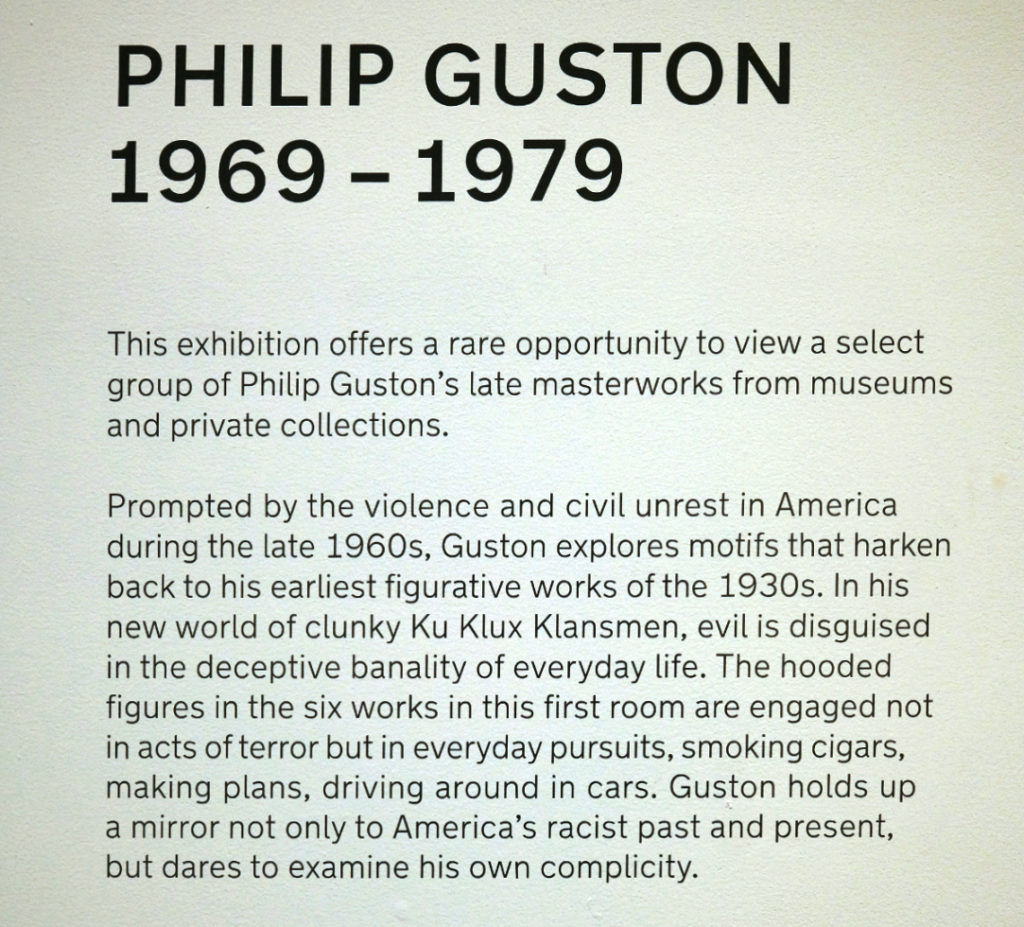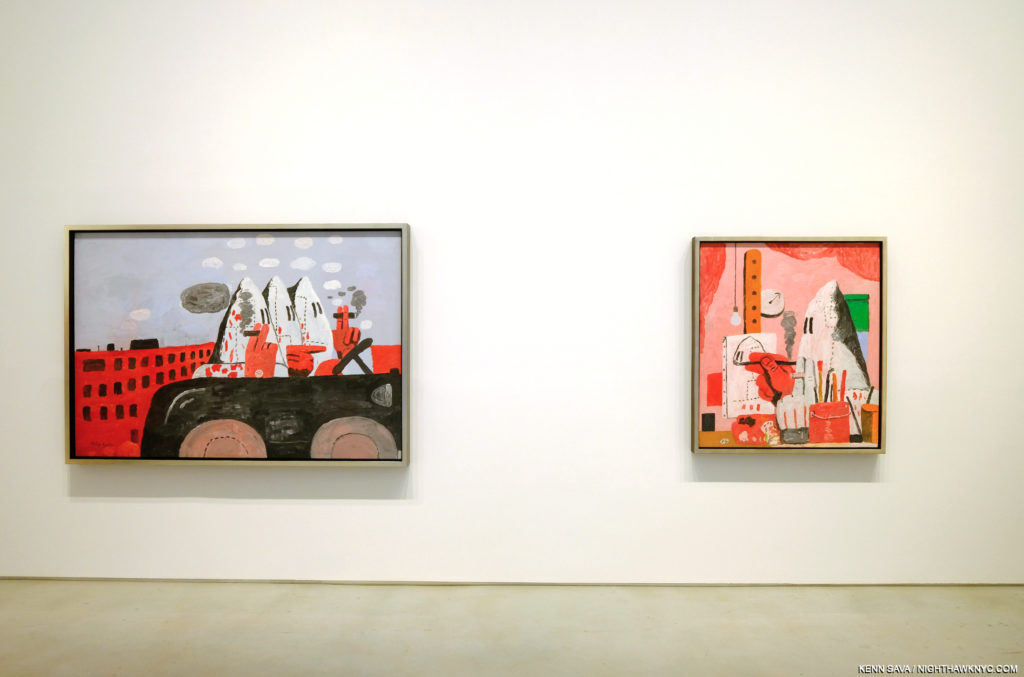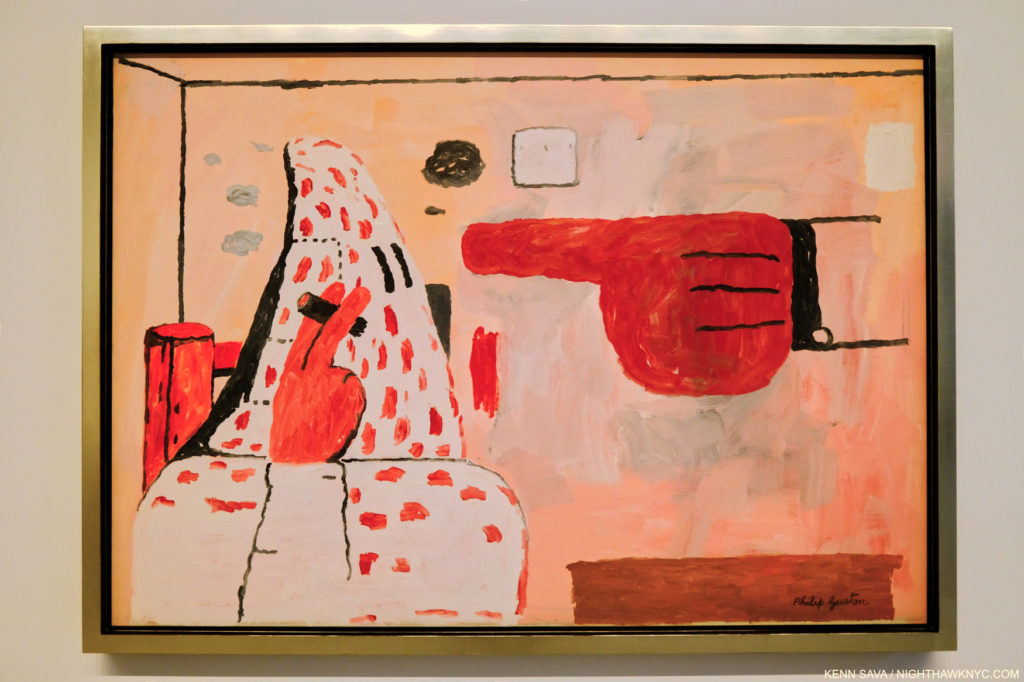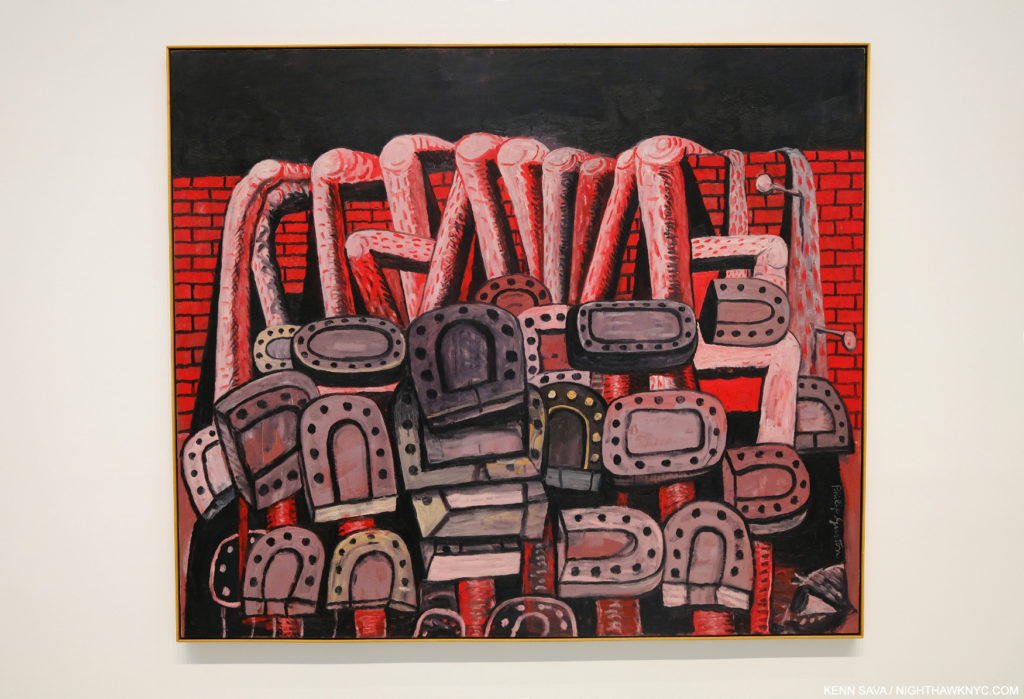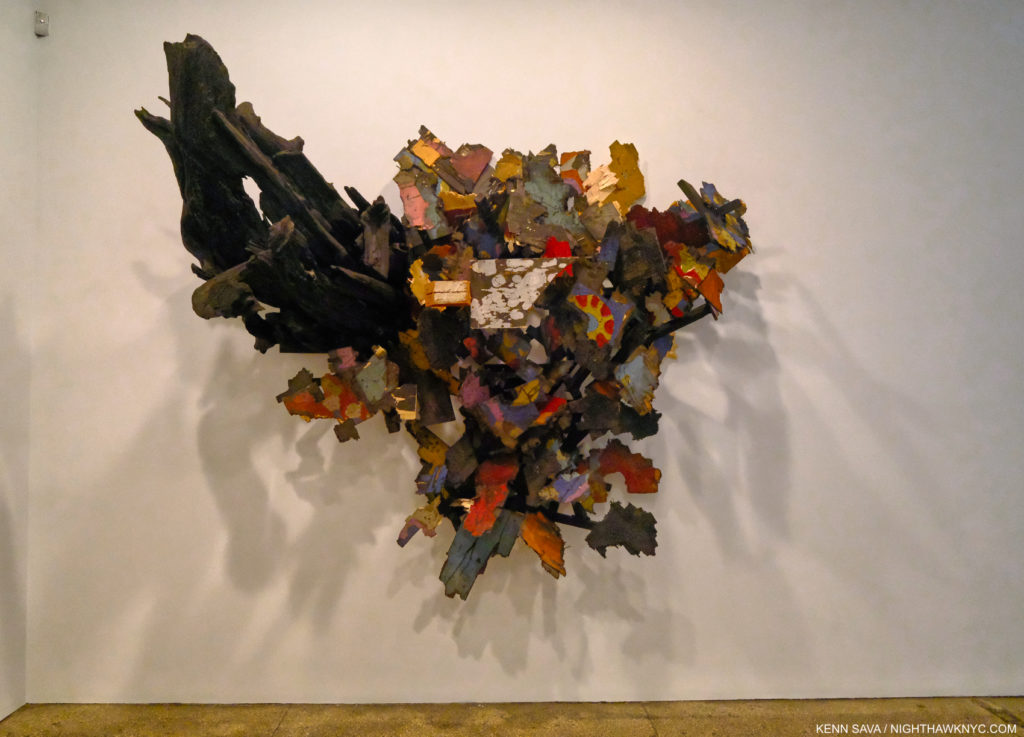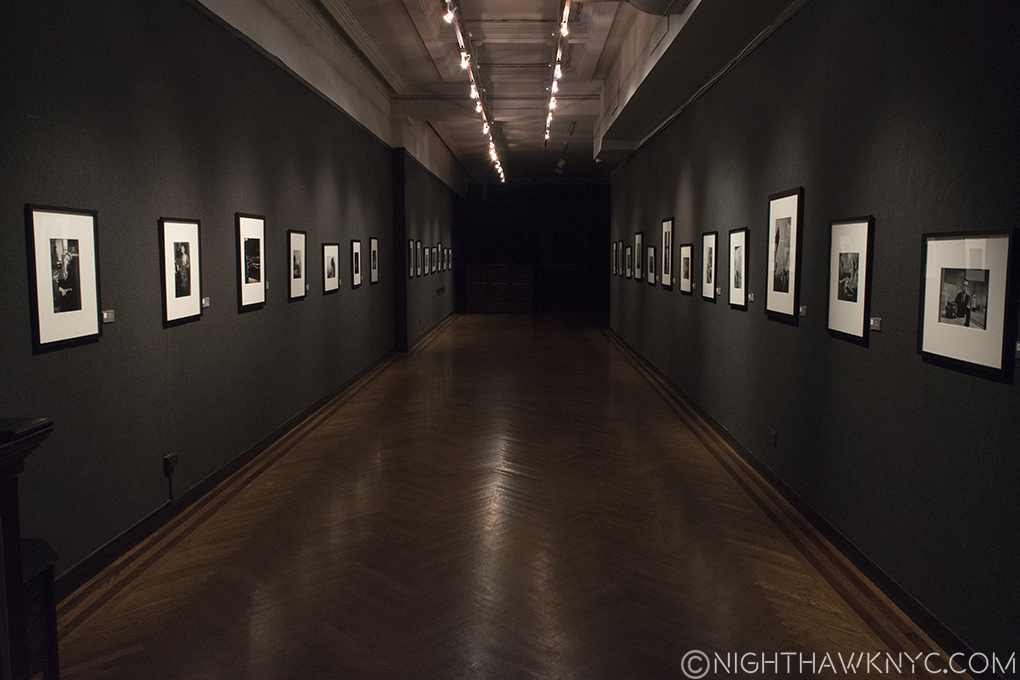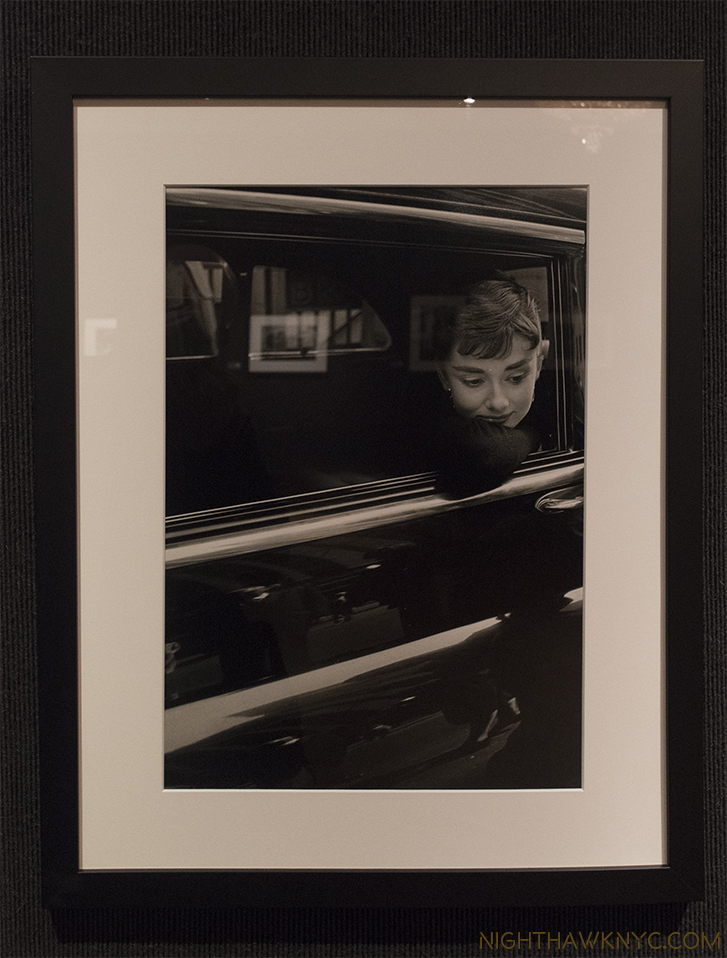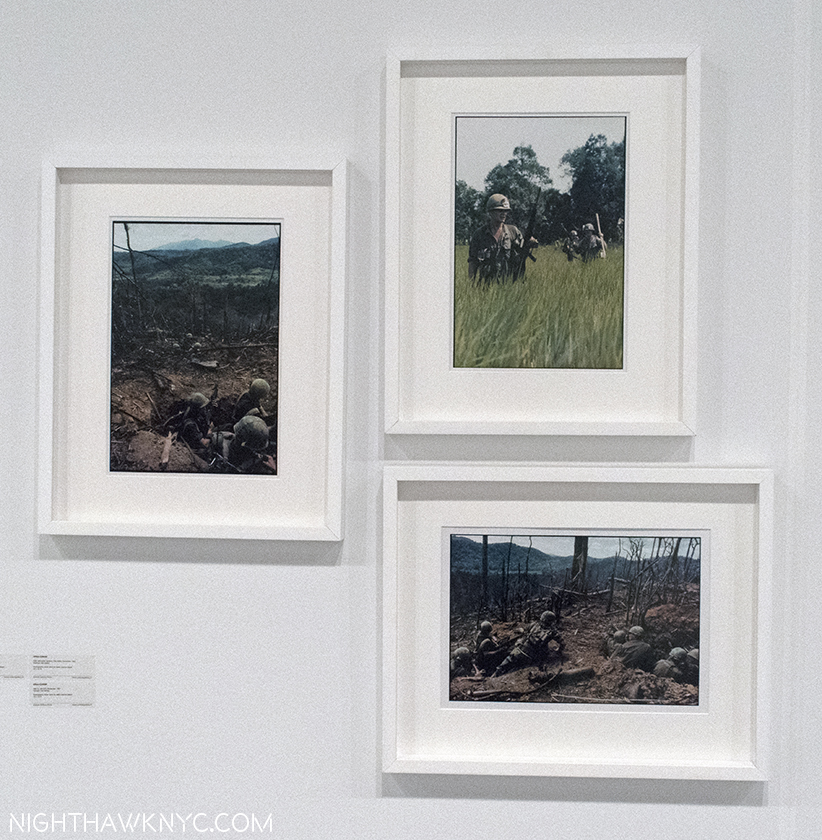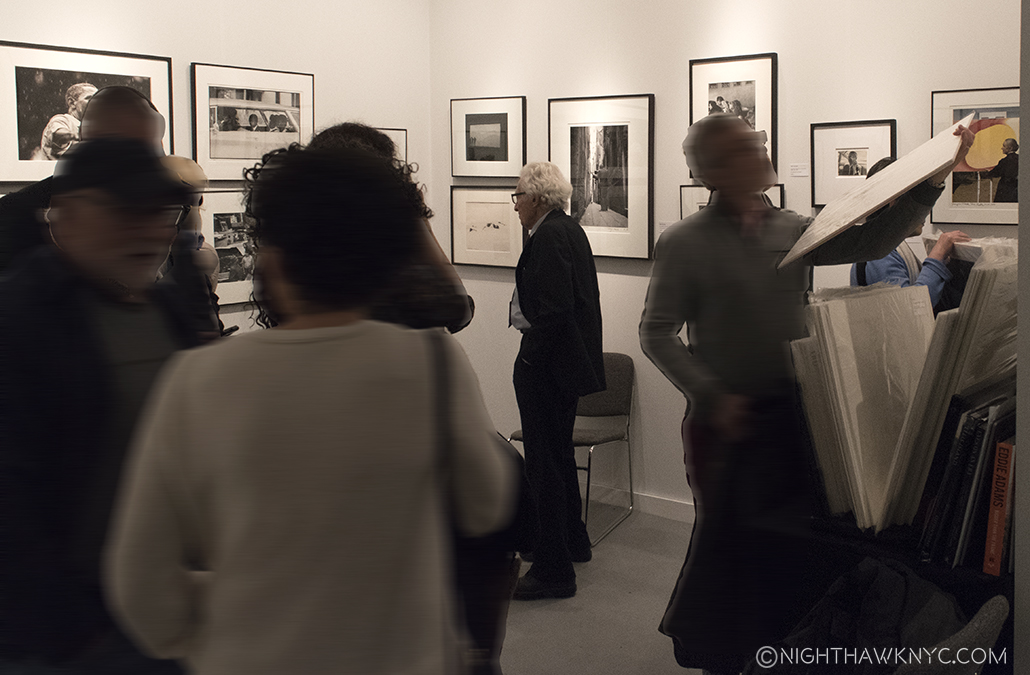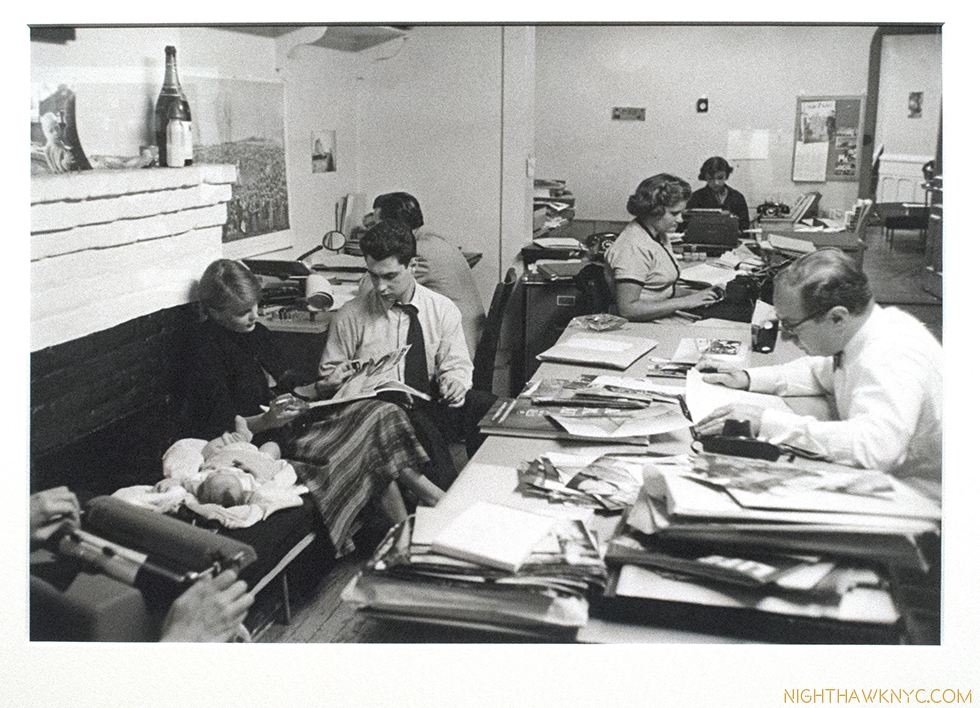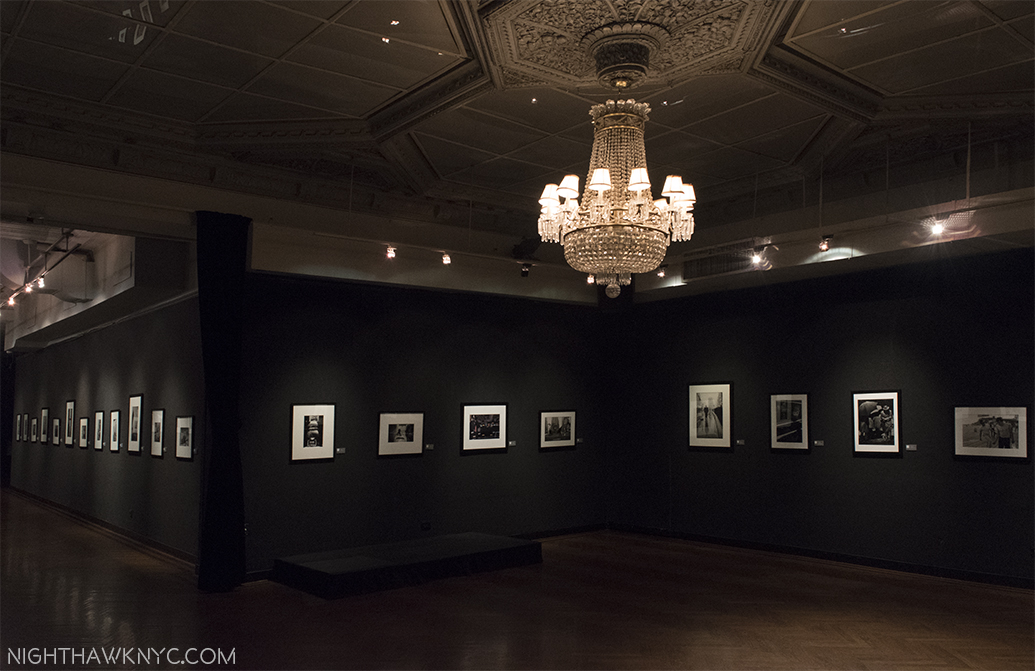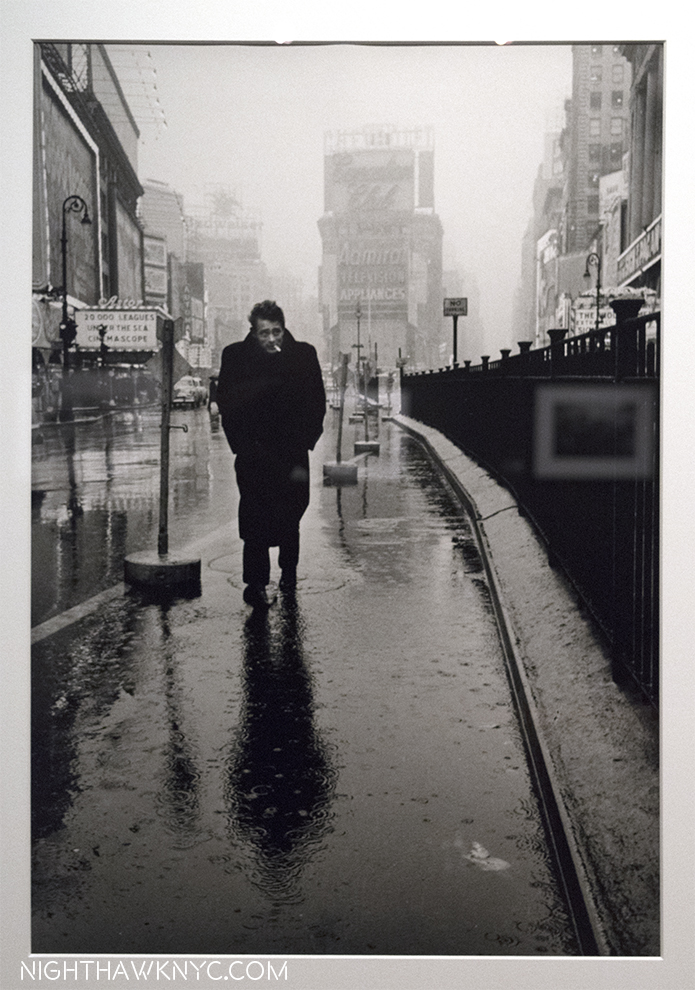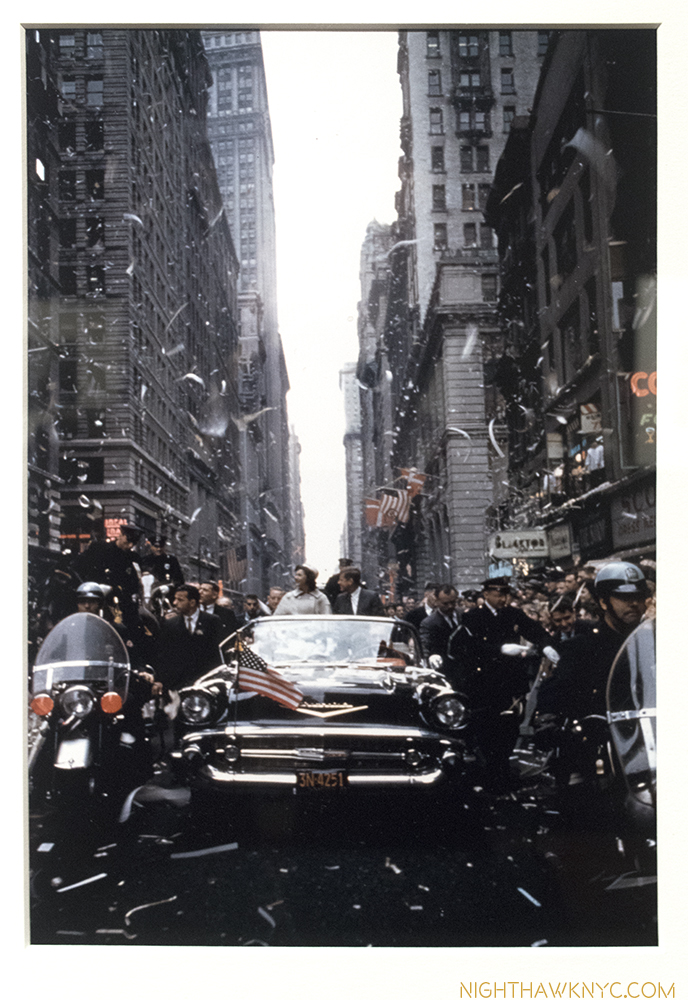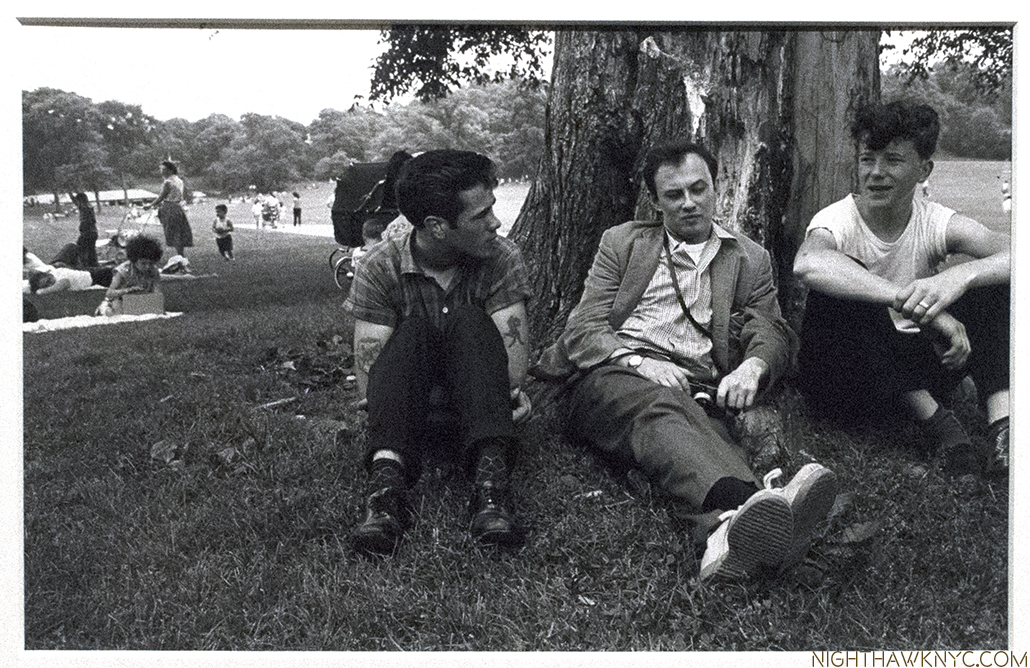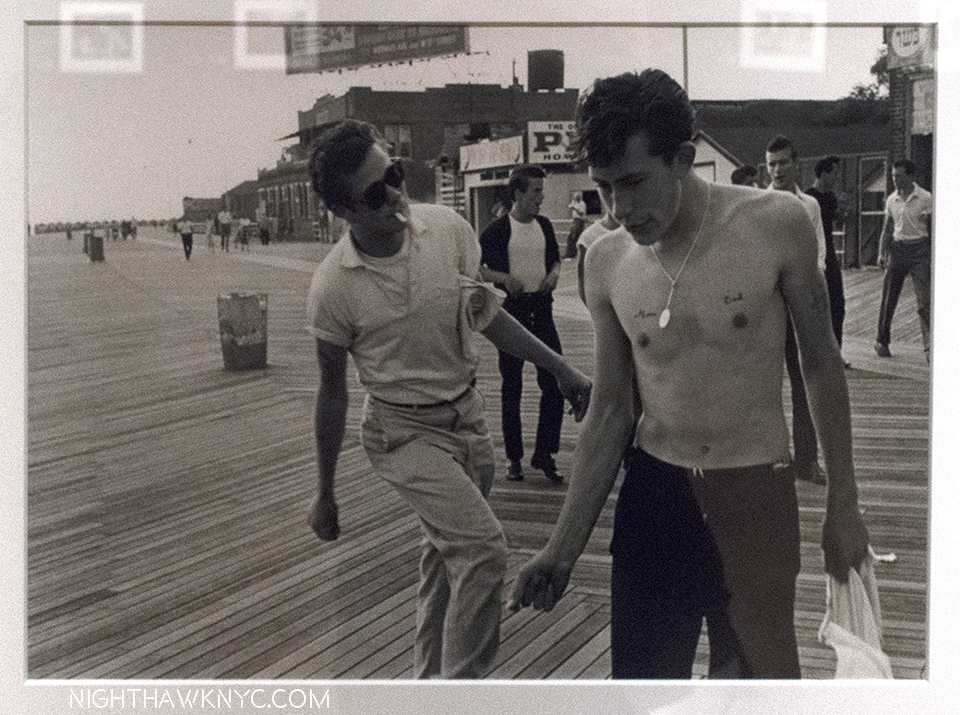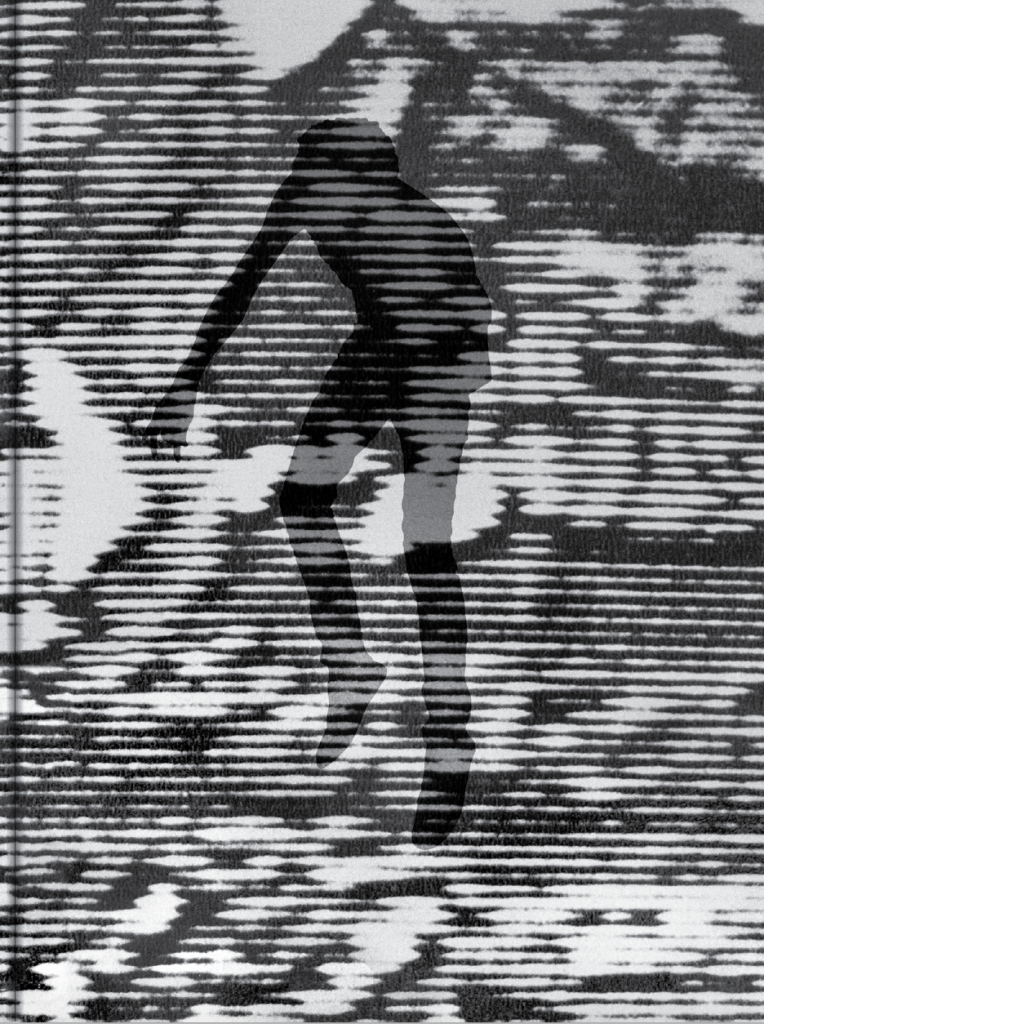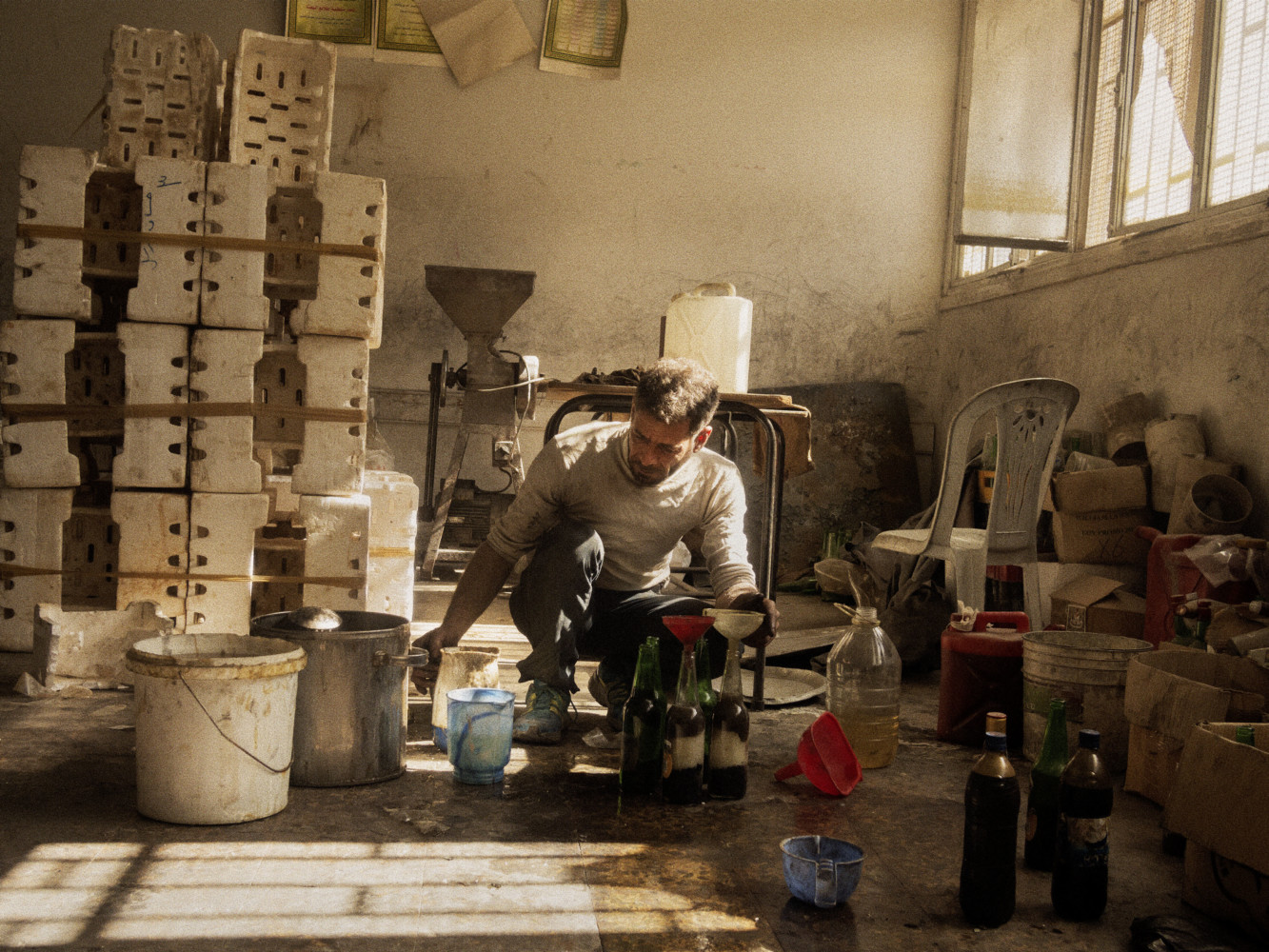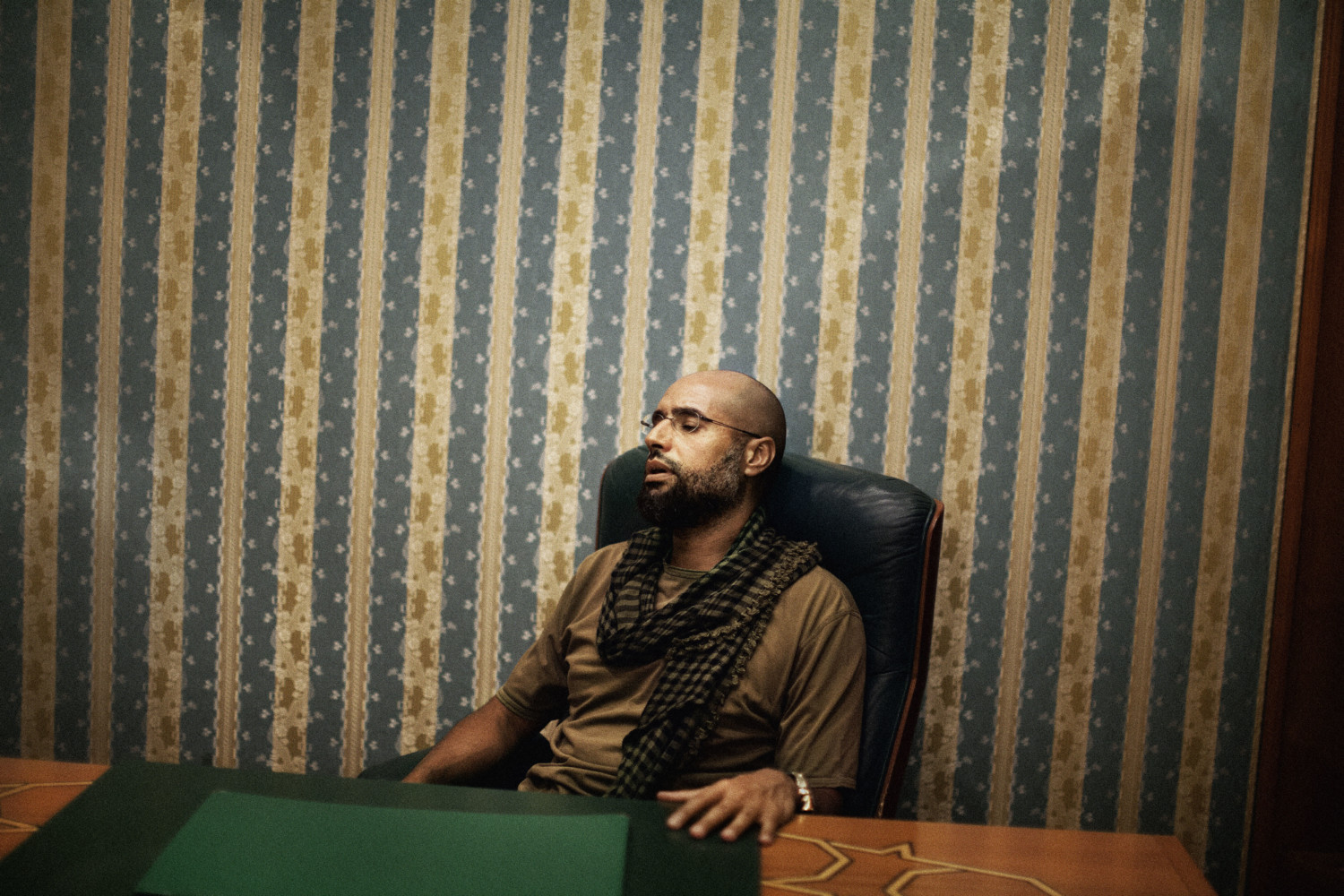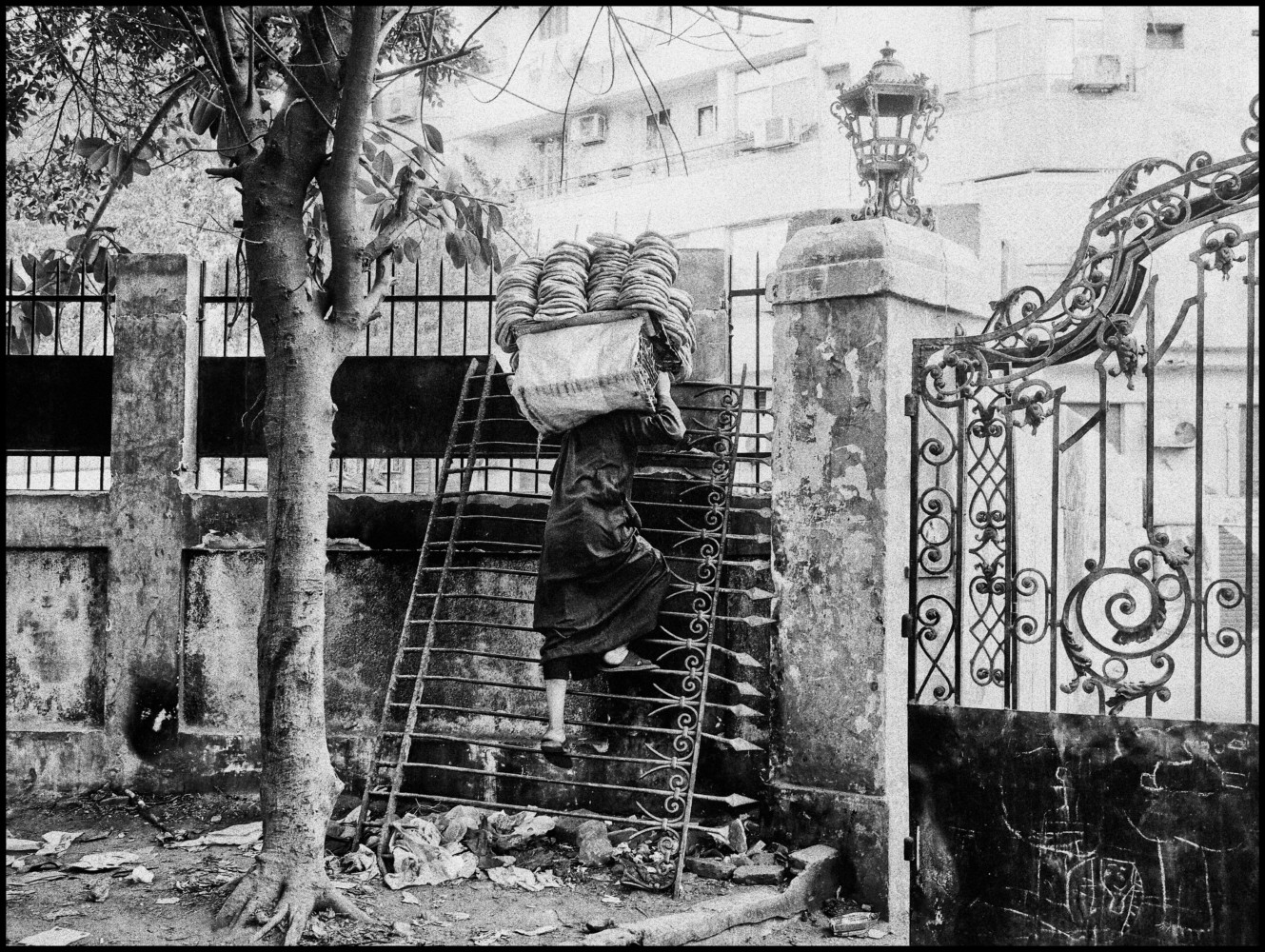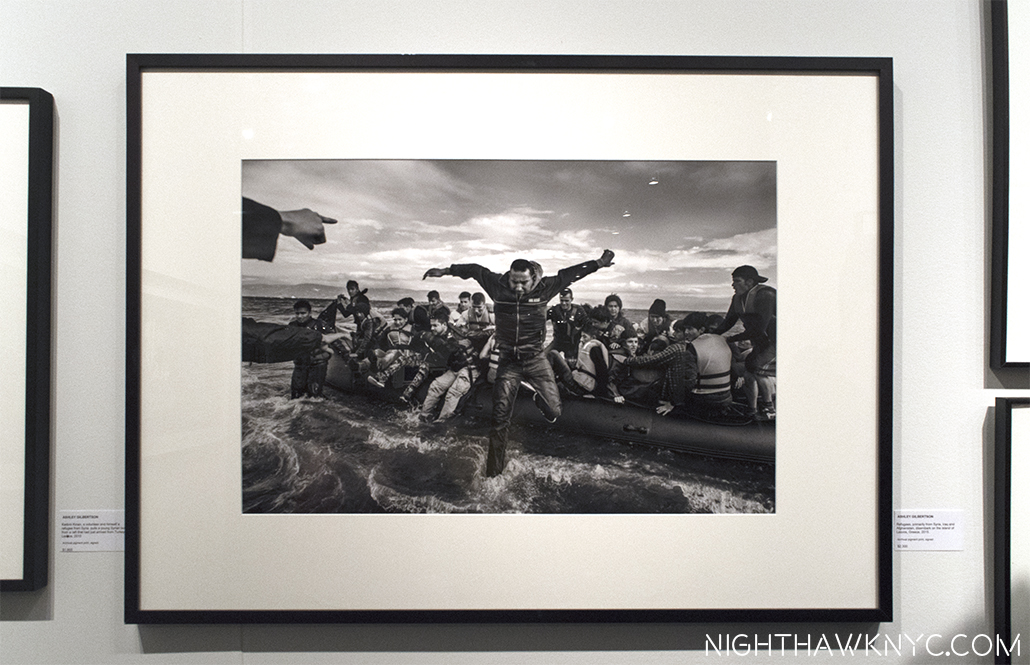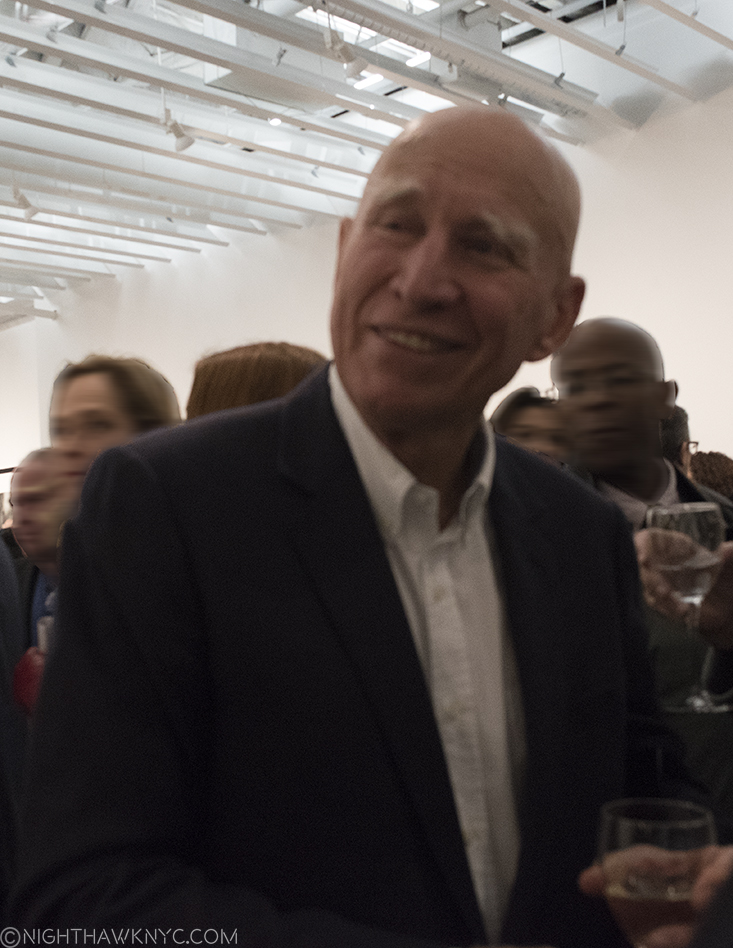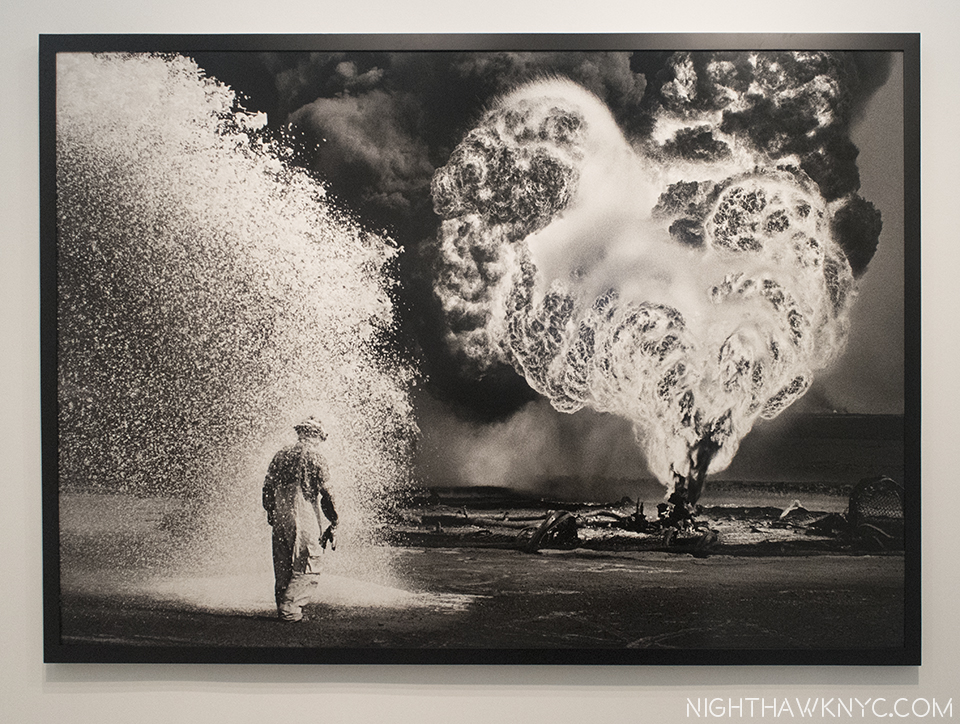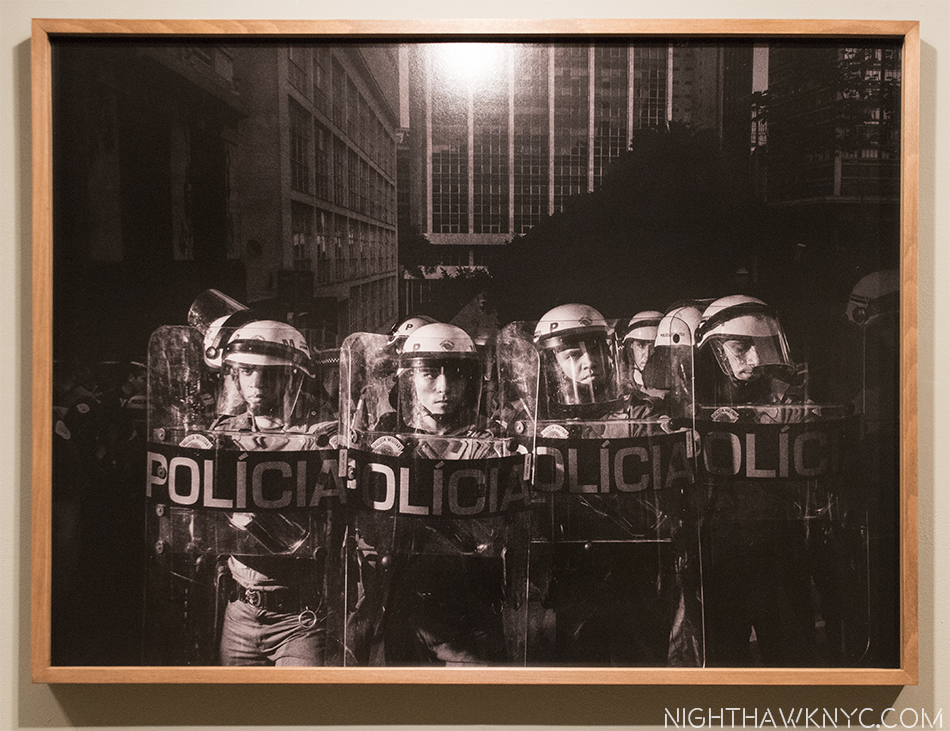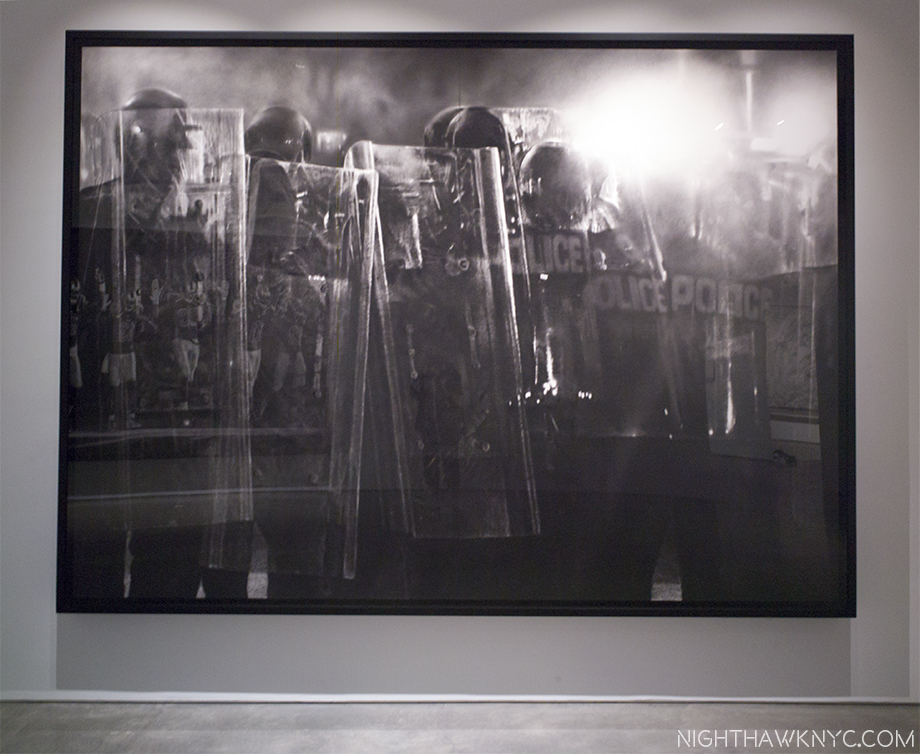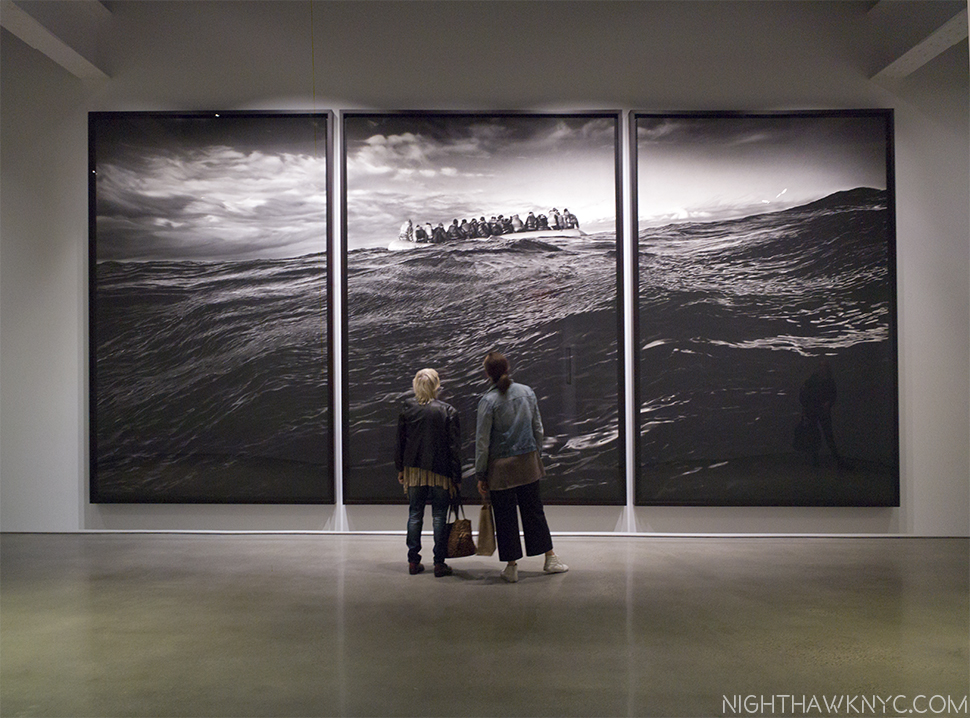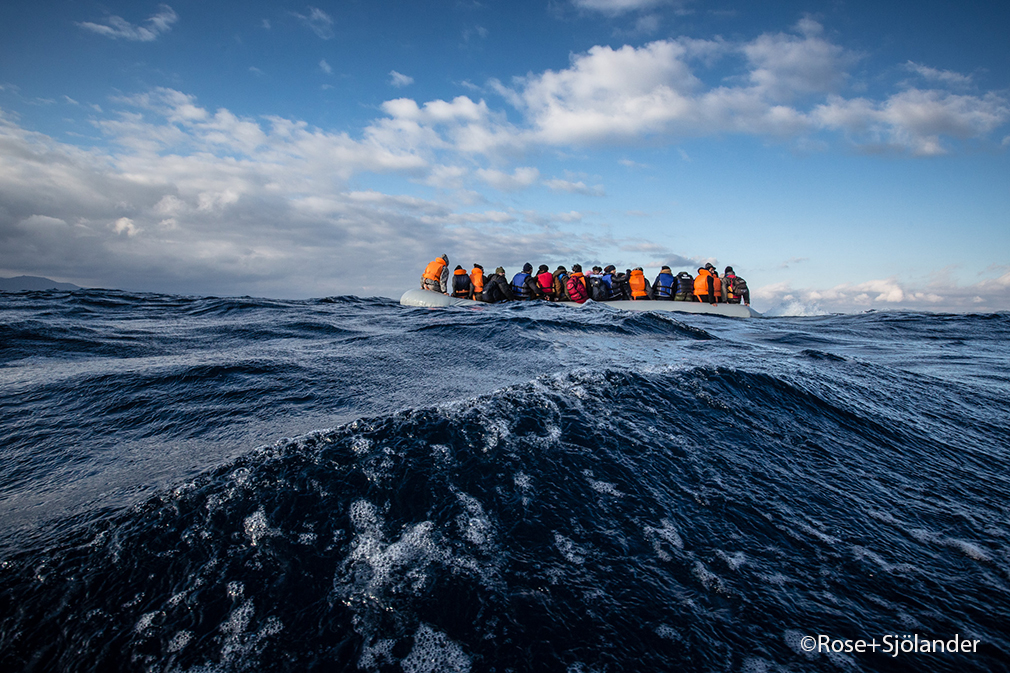Written & Photographed by Kenn Sava
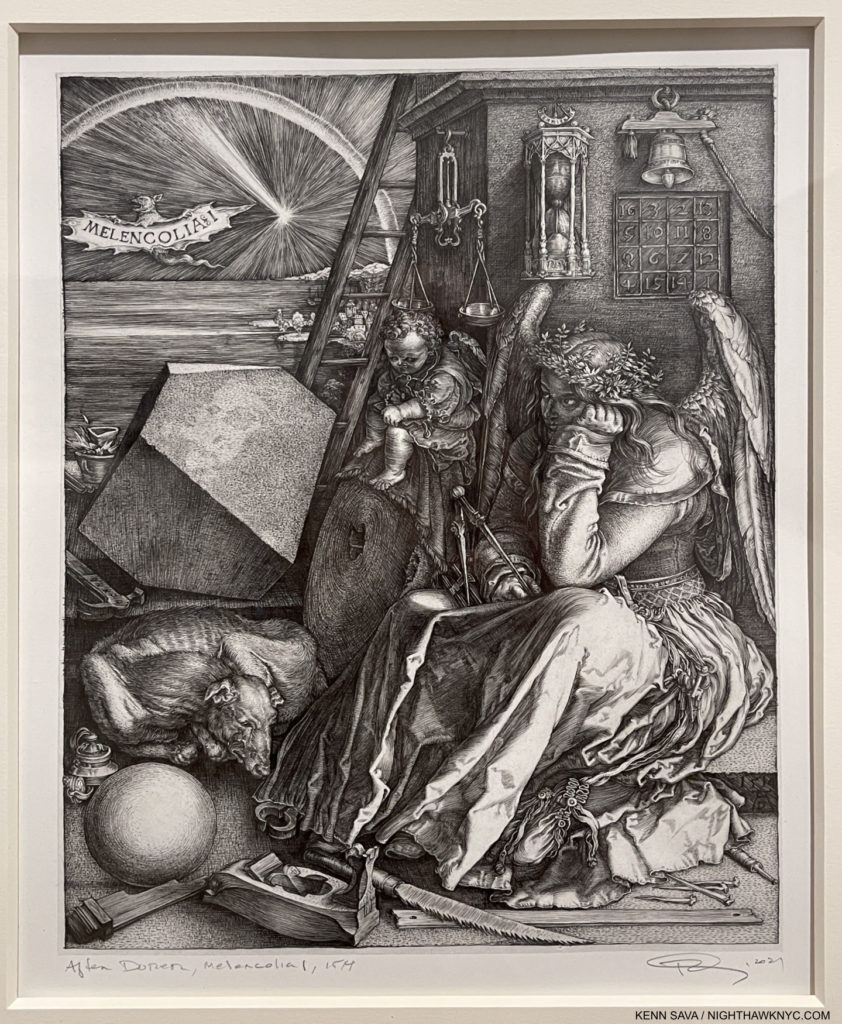
One of the most astounding works in Western Art history. Albrecht Dürer’s, Melencolia I, 1514, right? No! Read on…
There were some dark times in Chelsea’s (unofficial) Art district these past 18 months, like there was everywhere on planet earth. Some galleries went out of business, many gallery staffers lost their jobs, some galleries moved elsewhere. Early this year, things were slow. There were some shows here but not nearly as many as the pre-covid norm, and few here had been vaccinated at that point making it tricky for gallery staff and would-be visitors. I stayed away until I got vaccinated.
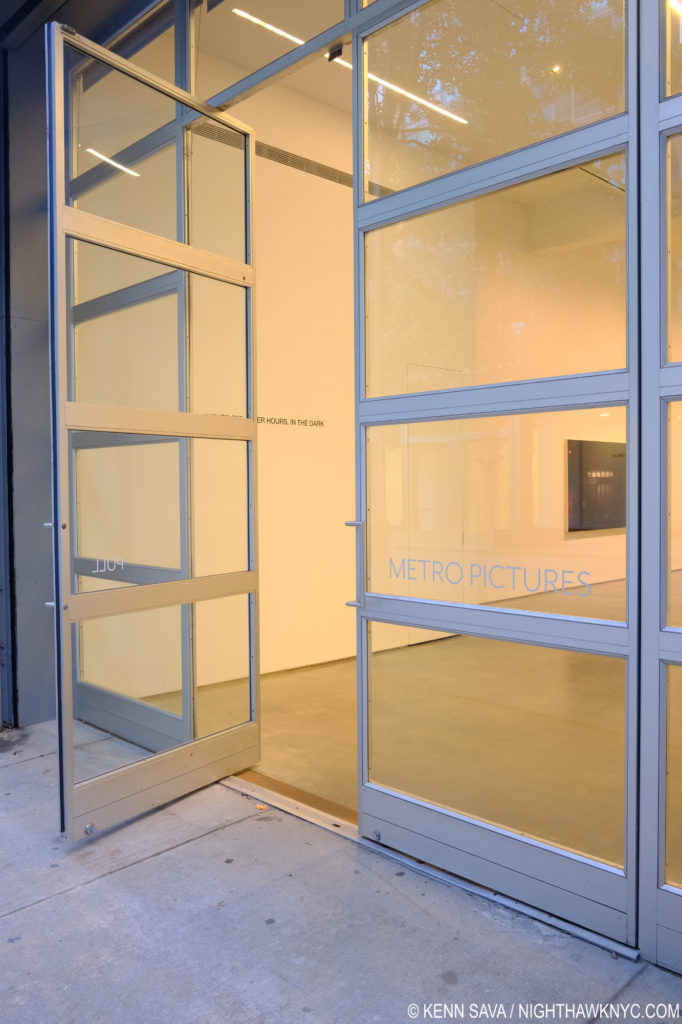
Going, going…Metro Pictures on West 24th Street. I have seen many memorable shows here, including the fine Louise Lawler show that’s up now inside that open door. They said they decided to close because of the globalization of the Art market, which doesn’t suit their model. I’ll miss them. Seen in October, 2021.
In March, legendary Metro Pictures on West 24th Street, an anchor of the neighborhbood since 1996, announced they would close this year, for reasons unrelated to the pandemic, they said1.
This whole summer there had only been two shows on my list- Richard Estes: Voyages and the blockbuster Cèzanne Drawing at MoMA, which I wrote about here. As the summer wound down I was curious to see what the fall season, the busiest of the year in Art, would bring. What would the “new normal” look like in the galleries & museums? Around Labor Day, I suddenly found myself with something I hadn’t had in 18 months- a list of shows, numbering 20, to see- carefully.
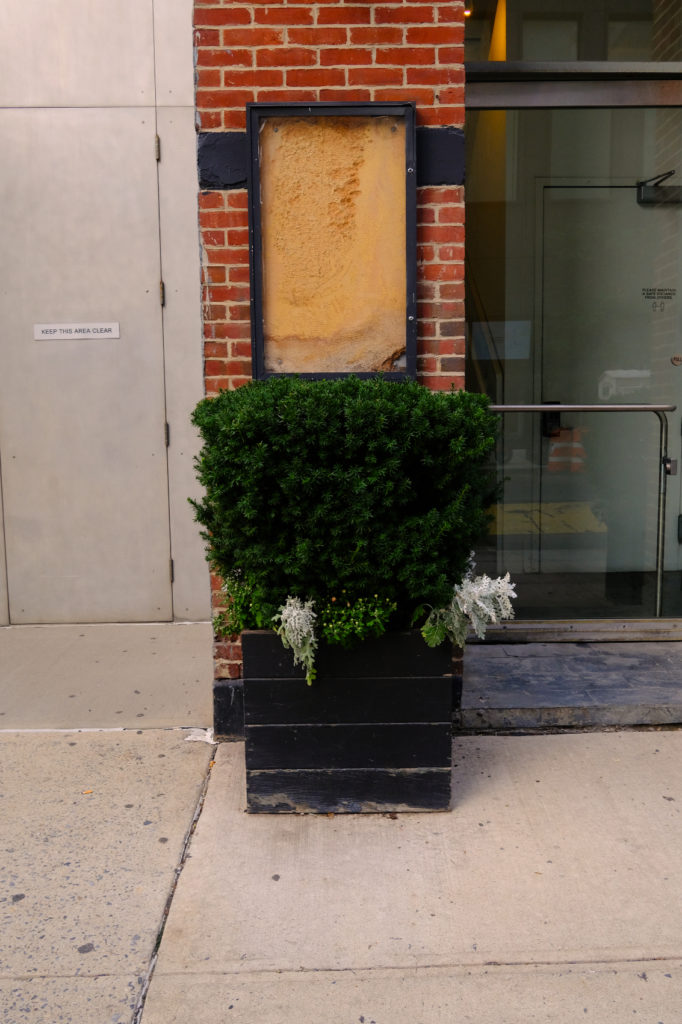
(Not) Coming (anytime) Soon. An abandoned sign outside a former Chelsea gallery on West 25th Street, October, 2021. A few of these on this block are an eerie reminder of what once was.
As I made my way down into the all too familiar West Side canyons very curious about what I would find, indeed, there was much that was different. Some familiar spots were gone, (most) others remain and virtually all of those were open, with varying degrees of precautions. Most surprisingly of all, a number of new galleries opened in spaces that had been under construction before the virus hit the fan around the High Line, and under it. Given I don’t generally attend openings (even pre-covid), and avoid going during the busier times (like weekends), I cannot attest to the level of foot traffic, a main reason galleries are here.
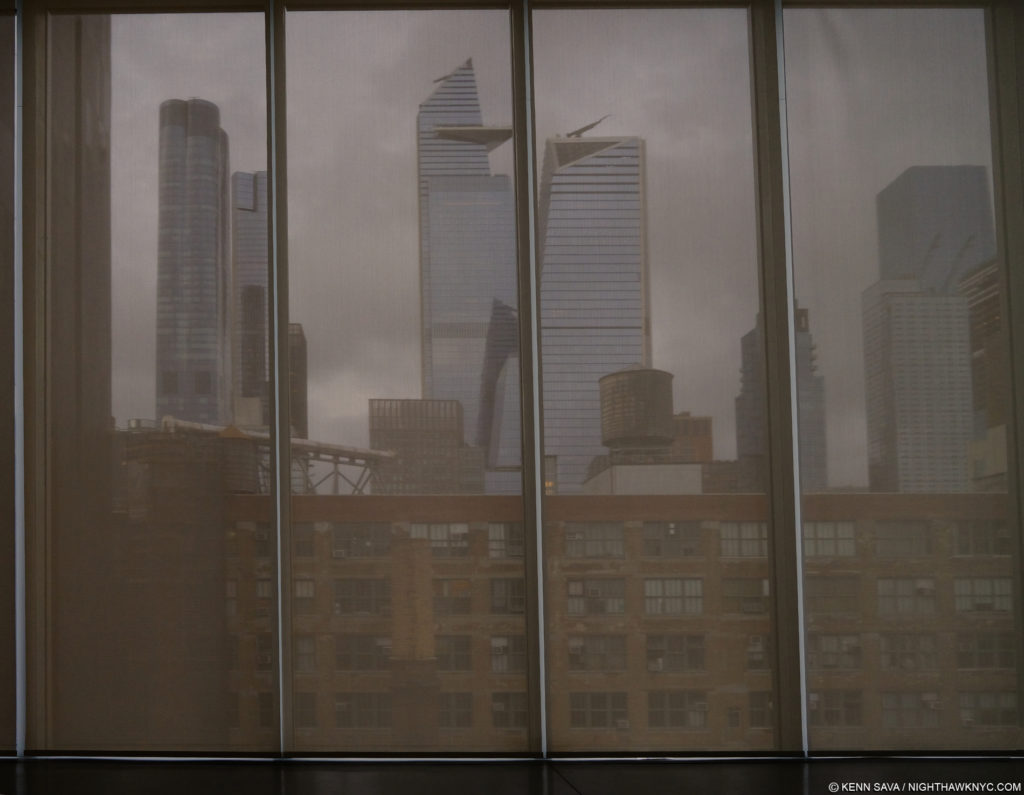
Forecast- cloudy. New and old on an appropriately grey day. The new skyline of Hudson Yards just north of Chelsea dwarfs the 100 year old buildings that have housed galleries for the past 30 years or so in better times, seen through the closed shades on the top floor of Pace’s new mega-plex gallery in October.
What I can say is that I notice there has been no slowing in the sheer mountain of new work that’s been created during these dark times, just as it was ever increasingly so as this new millennium has worn on. (Geez, it already feels like it’s worn on in 21 years?) Yet, in spite of the endless volume of Art for sale I have only seen a slight softening of prices, which I find surprising, and telling. Then again, these are usually “asking” prices. Actual “sold for” prices could be (and probably are) lower by an unknown amount. On the Art front, it turns out there are a number of good and very good shows up in Chelsea this fall. While there are still some on my list I haven’t gotten to see, of those I’ve seen thus far, some highlights include (in no particular order)-
Robert Longo: I do fly / After Summer Merrily, at Pace, West 25th Street-
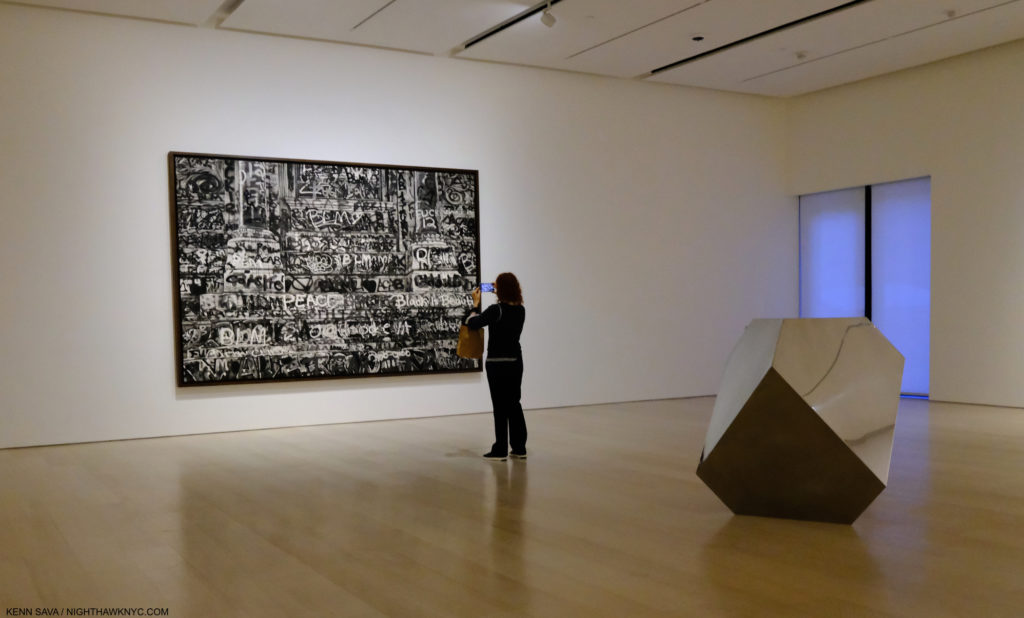
Untitled (Robert E. Lee Monument Graffiti, Richmond, Virginia), 2021, Charcoal mounted on paper, 96 by 146 inches, and Dûrer’s Solid, Stainless Steel, 2021. See following picture.
This is Robert Longo’s first show with Pace, after being represented by Metro Pictures for an unheard of 40 years, until they announced their plans to close. Famously part of the so-called “Pictures Generation” with Cindy Sherman, et al, Mr. Longo is one of the finest practitioners of the rapidly becoming lost Art of Drawing we have. I’ve been surprised with his choice of subjects, but always impressed by his new work with every succeeding show I’ve seen going back well over 20 years. They always leave me marveling.
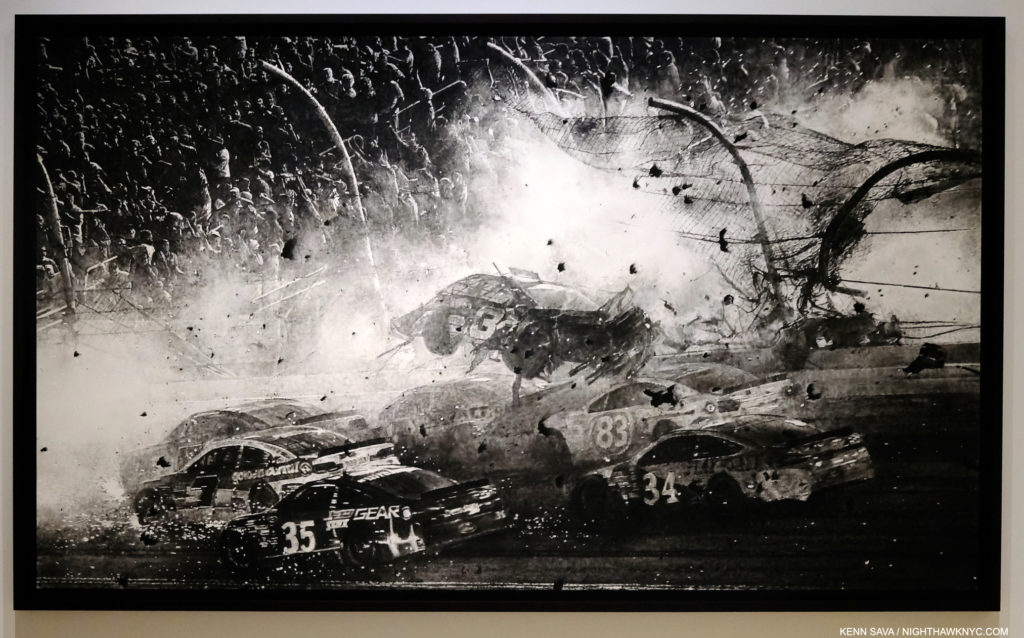
Untitled (Nascar Crash, Daytona), 2021, Charcoal mounted on paper, 70 x 120 inches. Keep reminding yourself that these are Drawings.
His new show, I do fly / After Summer Merrily, kicking off a run of Robert Longo shows around the world over the next few years, is equally impressive. Most of his pieces are Drawings in charcoal, though in this show he also shows off his remarkable skill with graphite.

Robert Longo, Untitled (After Dürer’s, Melencolia I, 1514) 2021, Graphite on paper(!), 12 3/4 by 9 15/16 inches. You could have knocked me over with a feather when I first saw this. My jaw was open to the bottom of my mask.
In addition to creating new works often based on Photographs of recent events, the other thread in Mr. Longo’s work these past many years has been painstaking creation of his own versions of masterpieces of Painting, most notably his Gang of Cosmos works, monochromatic charcoal copies of Abstract Expressionist masterworks, which filled an entire show at Metro Pictures in 2014. Now, he has turned his eye and hand to Albrecht Dürer’s Melencolia I, 1514, which is an engraving. Mr. Longo has done his version in graphite! While the more unforgiving engraving may be the more challenging technique, to translate Dürer’s marvel to this level of detail is astounding. It appears every single line has been replicated, down to Dürer’s famous “AD” monogram signature in the shadow above the tools to the right. As if this wasn’t enough, he’s also created a Sculpture of his imagining of the famous “Solid” seen to the left of center, which was also on view a few feet away, as I showed earlier.
After all the work shown in his Metro Pictures shows this century, as well as museum shows, like Proof: Goya, Sergei Eisenstein, Robert Longo, which opened at the Garage, Moscow, then travelled to the Brooklyn Museum, the time has come for a full Retrospective of his work in this country. The last one was at the Los Angeles County Museum of Art in 1989. One is opening in Europe in 2024. I hope it makes it here.
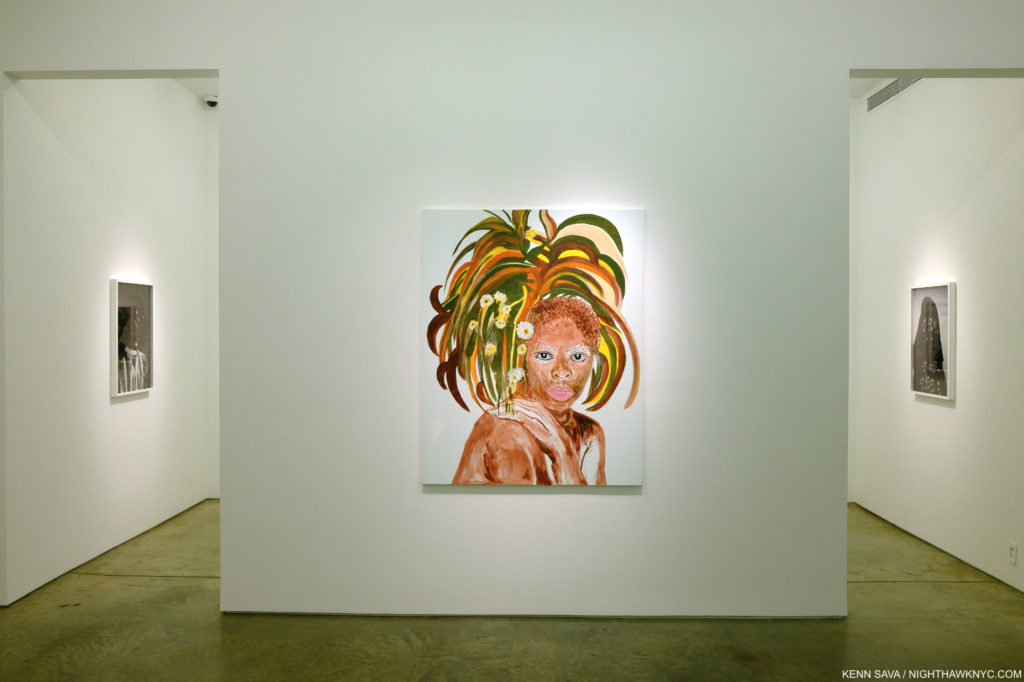
Zanele Muholi, Itha, 2021, Acrylic on canvas, from the first show to include her Paintings along with her Photographs in the second gallery.
Zanele Muholi, Awe Maaah! at Yancey Richardson- Zanele Muholi has established herself as one of the world’s great portraitists. Though she’s done far more, for my money that claim was sealed with Zanele Muholi: Somnyama Ngonyama, Hail the Dark Lioness, a book of Self-Portraits, published by Aperture in 2018, a masterpiece among PhotoBooks of the past decade. Now, for the first time, Awe Maaah! shows there is more to the renowned Photographer and visual activist. Stepping into the show, a fan of Ms. Muholi’s black & white Photographs might be shocked by seeing something new- color! It turns out she Paints, too! And quite well indeed as the debut selection of her Paintings in the show reveals.
Known for her gorgeous black & white Photographs, her Paintings are FULL of bright, vivid colors. Zanele turned to Painting during the pandemic when Photographing others was not possible. Though in color, her Paintings share familiar elements with her Photographs. First, these were all portraits, of one or two sitters. Second, in many of her Paintings, the Artist is depicted, like her Photographs, n a variety of guises. Then, the eyes are the focus of both bodies of work. In some of her Photographs, they almost look like they are Painted. Compositionally, they both feature empty backgrounds, though some of the Paintings were colored. I was impressed with the range of approaches. Each Painting is different. Quite an auspicious first showing.
But, for anyone new to her work, or in need of a refresher as to why she is one of the most respected Photographers working today, all that was needed was to take a few steps into the second gallery.
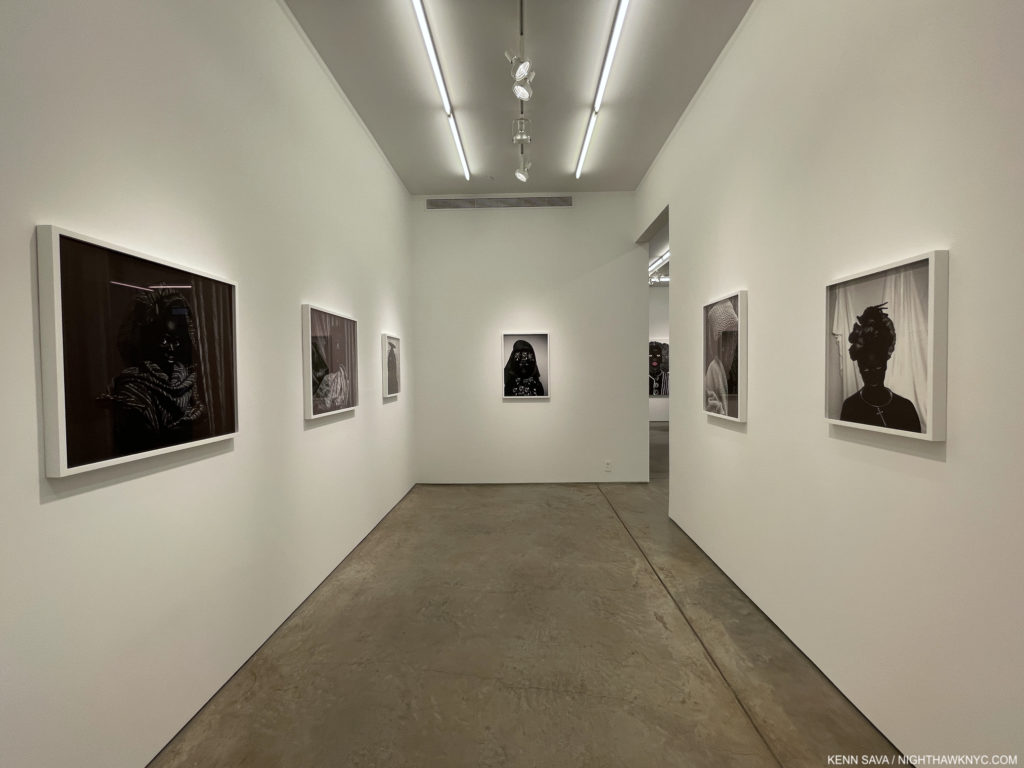
The second gallery of Awe Maaah! contains 8 stunning Self-Portrait Photographs (the one just shown is behind me in this shot)
There, a gorgeously selected group of her Photographic Self-Portraits was all the reminder needed. Not surprisingly, the entire show was sold out. Already one of the most vital Artists working in Photography, today, Awe Maaah! announces there are more sides to Zanele Muholi to recon with than we’ve seen thus far.
Philip Guston: 1969-79 at Hauser & Wirth- With a large, street-facing, gallery featuring Philip Guston’s “klan” Paintings I wondered if this show was a sort of “test balloon” after the controversial postponement of Philip Guston Now museum show. They certainly served to stop people on the street, who seemed perplexed as to what they were, and what they were about, from the conversations I heard walking past.
I think that many who are familiar with Philip Guston’s work wonder about them, too. Delving into their history sheds some light on them. I wrote about the history of Philip Guston’s hooded/klan (lower case, mine) works, saying- “I think it’s important to remember that they go back to when the Painter was about 18. In Philip Guston Retrospective, the backstory is relayed on pages 16 & 17. It begins by quoting Mr. Guston- ‘I was working at a factory and became involved in a strike. The KKK helped in strike breaking so I did a whole series of paintings on the KKK. In fact I had a show of them in a bookshop in Hollywood, where I was working at that time. Some members of the klan walked in, took the paintings off the wall and slashed them. Two were mutilated. That was the beginning.'”
“(The text then continues) ‘The Ku Klux Klan, also known as the Invisible Empire, had a significant membership in California in the 1930s and 1940s, and Los Angeles County was its most active Klavern. Guston and several other of his friends also painted portable murals for the John Reed Club on the theme of ‘The American Negro.’ Guston’s submission was particularly volitile. Based on the Scottsboro case, in which nine black men were sentenced (many said on false and circumstantial evidence) to life in prison for raping a white girl. Guston’s mural depicted a group of hooded figures whipping a black man. The murals were eventually attacked and defaced by a band of ‘unidentified’ vandals. The experience of seeing the effect of art on life and life on art never left Guston, and the unsettling image of the hooded figure was branded into his visual imagination.’ In the 1930s, in addition to strike breaking, the klan also targeted Jews. Philip Guston, originally Philip Goldstein, was Jewish. Of course, their main target were Blacks…Philip Guston lived long enough to see that racism was deeply embedded in the fabric of American life, possibly even in his own life.” (End quote.) So, circa 1970, when he moved away from pure abstraction, he began including hooded figures in his work again.
This time, it seems to me, he was looking inside for signs of prejudice in himself as well as society at large. And so, these are somewhat unique works in Art history. Not many other Artists have been as open, daring, or had the courage to lay themselves so bare as Philip Guston may have been doing in them. And, they are part of his enormously fresh late period, a real breakthrough for the Artist stylistically, which was met with puzzlement when they were new.
A very nice selection of “other” work from 1969-79 was on view in the large, second gallery. Today, they have become hugely influential, though the hooded figure works remain puzzling or misunderstood by some. (My pieces on prior Philip Guston shows in NYC are here, on the 1950’s abstractions, and here, on his Poor Richard Nixon Drawings.)
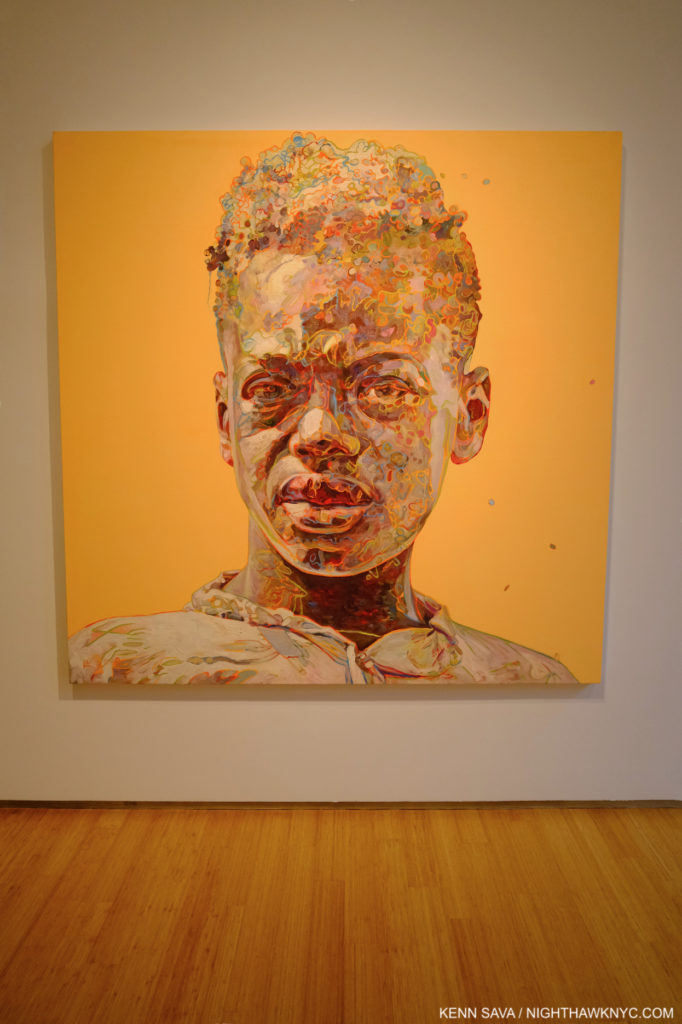
Hung Liu, Portrait: Sharecropper, 2018, Oil on canvas. Hung Liu lived and worked among country laborers for 4 years after being sent there by Mao Zeodong’s government for “re-education.” As a result, Hung Liu shared a special bond with the work of FSA legend Dorothea Lange dust bowl Photographs, upon who’s work Hung Liu based some of her Paintings. Ms. Liu emigrated to California in 1984, where she lived & worked for the rest of her life.
Hung Liu: Western Pass at Nancy Hoffman Gallery- Beautiful, and bitter sweet is the only way I can characterize this wonderful show, which the Artist worked on with Nancy Hoffman Gallery right before her tragic passing on on August 7th. It opened a month later, on September 9th. Along with the major retrospective up as I write at the National Portrait Gallery of the Smithsonian in Washington, it will serve as a fitting tribute to this terrific Artist who was just beginning to gain the wide recognition and acclaim I believe her work deserves when she passed away. Long a champion of the late Chinese-American Painter, Nancy Hoffman has been showing her work going back to at least 2010 as far as I can tell and they have published some exquisite catalogs for each of them which are still available.
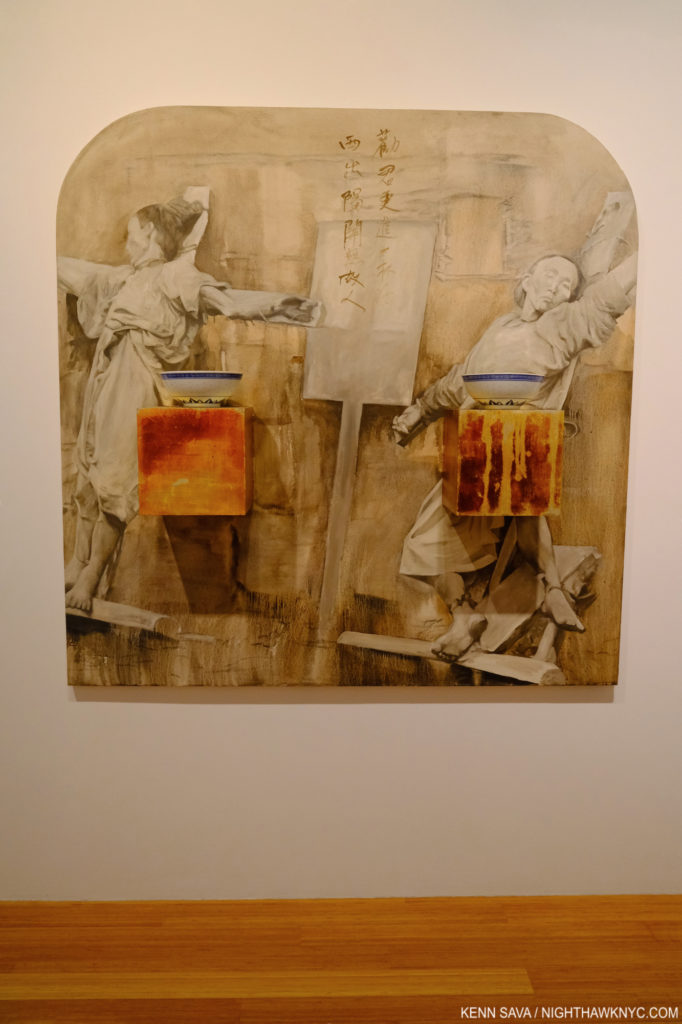
Western Pass, 1990, Oil on canvas, silver leaf on wood, ceramics. I asked Phil Cai what was going on in this work. He spoke about how we’re seeing two prisoners about to be executed with an ancient Chinese poem between them. The poem speaks of having another glass of wine before you pass beyond the western pass where you won’t have any friends. Two empty wine bowls sit in front.
This show is a beautifully chosen selection of 31 years of her work, right up to earlier this year. It’s possible to watch her style change and evolve over time, a testament to her flexibility and talent. Her subject matter, however, doesn’t change. Like Alice Neel, “people come first” for Hung Liu, too, and much of what she shows us is based in the Photographs of Dorothea Lange, found Chinese Photographs, or her own Photographs taken during the 4 years after she spent in the countryside laboring in rice and wheat fields as part of her agrarian “re-eduction” under Mao Zeodong. So, it is easy for her to related to the FSA work of Dorothea Lange, and the lives of is based on her own personal experiences. Haunting and powerful work that effortless cuts across place, cultures and time. Work that will be around for the long haul, in my opinion. I was lucky enough to see this show with Phil Cai, Director of Eli Klein Gallery, who’s remarkable Cai Dongdong show I wrote about in 2018. Phil, one of the rising stars in the Art world, met Hung Liu and visited her studio in Oakland. He provided fascinating insights into her work that he has been looking at for almost a decade. “I hope to wash my subjects of their ‘otherness’ and reveal them as dignified, even mythic figures on the grander scale of history painting,” she wrote.
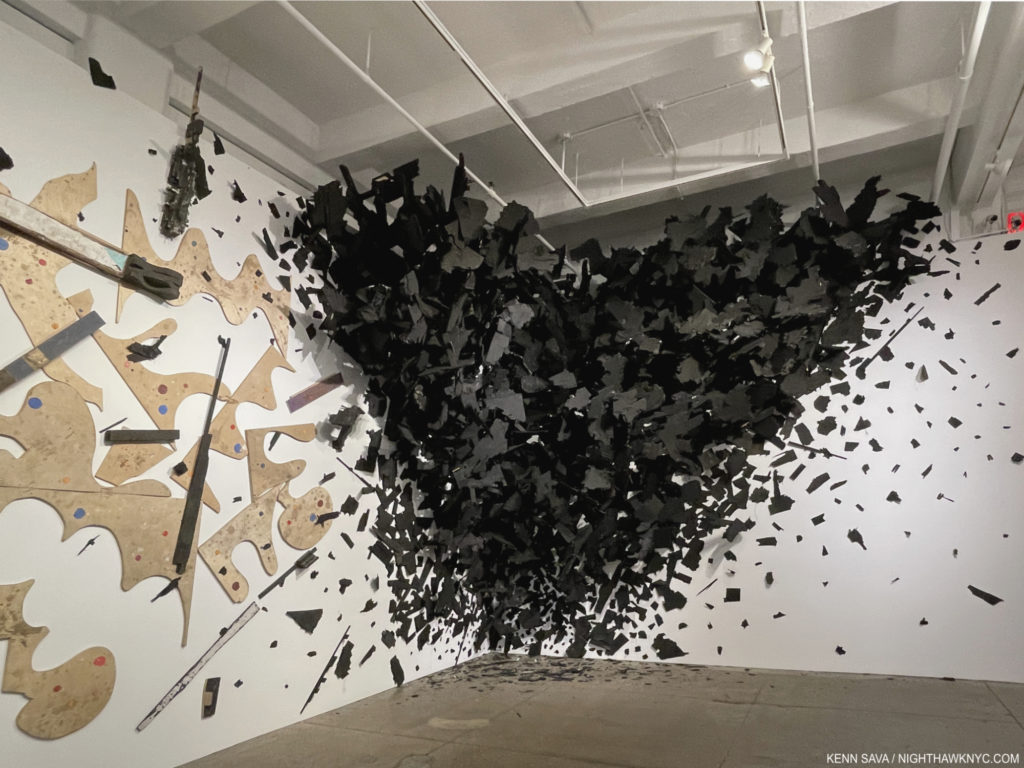
Leonardo Drew, Detail of Number 305, 2021, Mixed Media. Just one corner, plus, of this piece installed on all 4 walls of the large room.
Leonardo Drew at Galerie Lelong- I wrote extensively about Mr. Drew’s last two NYC shows in 2019, during which I met and spoke with the Artist. He returns this fall with his first show since, with all the work on view created in 2021. It says a lot to say that it took 5 people 4 days to install this show! The endless details in his work is only equalled today in Contemporary “Sculpture,” in my experience, by the shows of his great contemporary, Sarah Sze. Mr. Drew continues to reinvent Sculpture and to push the limits and the boundaries of what it can be including another work that seems to explode from the corner as his last show here had one exploding from the rear wall. Both “explosions” frozen in time. Whereas in his last show, he introduced color to his sculpture, which had been black & white to that point, here, he continues that with supreme taste in works that almost look like a new take on Abstract Expressionism, if I believed in such terms. I don’t, so the only term that remains applicable to this major Artist remains- Leonardo Drew. And, if this wonderful show of terrific new work isn’t enough, Mr. Drew’s Prints are on view at Pace Prints nearby. I have not as yet seen them.
At this moment, I imagine that the “bleeding” is going to continue in Chelsea, as it is in far too many other places and in many other fields, for some time. More galleries will close, consolidate or move. Yet, it seems to me that the mega-galleries building their own buildings in the neighborhood may actually draw other galleries here, depending on the asking prices for space. Maybe things are at or near the bottom? It’s too early to tell.
After what I wrote during the shutdown last year, it seems that at least things have begun to bounce back after a very slow spring. But, Art is not life. Many other things have to be in place for anyone to be able to, or want to, see Art. It’s taken a long time for many of those things to get back into place here. I hope things are getting better where you are.
*-Soundtrack for this post is “How Can You Be Sure?” a B-side by Radiohead from The Bends Collector’s Edition-
“Seen all the good things and bad
Running down the hill
All so battered and brought to the ground
[Pre-Chorus]
I am hungry again
I am drunk again
With all the money I owe to my friends
[Chorus]
When I’m like this
How can you be smiling, singing?
How can you be sure?
How can you be sure?”*
NighthawkNYC.com has been entirely self-funded and ad-free for over 6 years, during which over 250 full length pieces have been published. If you’ve found it worthwhile, you can donate to keep it going & ad-free below. Thank you!
Written & photographed by Kenn Sava for nighthawknyc.com unless otherwise credited.
To send comments, thoughts, feedback or propositions click here.
Click the white box on the upper right for the archives or to search them.
For “short takes” and additional pictures, follow @nighthawk_nyc on Instagram.
Subscribe to be notified of new Posts below. Your information will be used for no other purpose.
- https://www.nytimes.com/2021/03/08/arts/design/metro-pictures-gallery-close.html ↩

